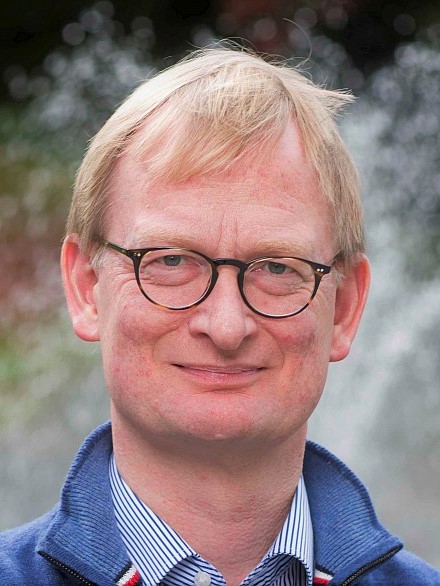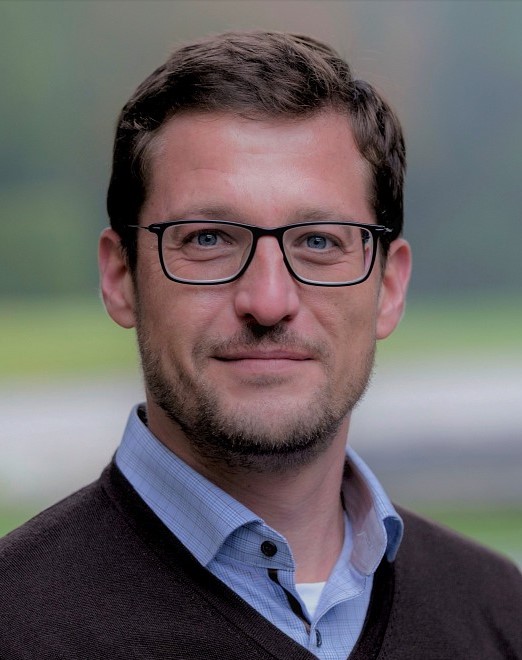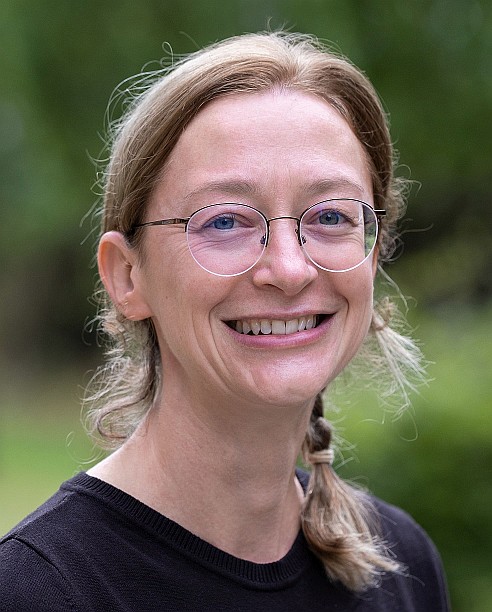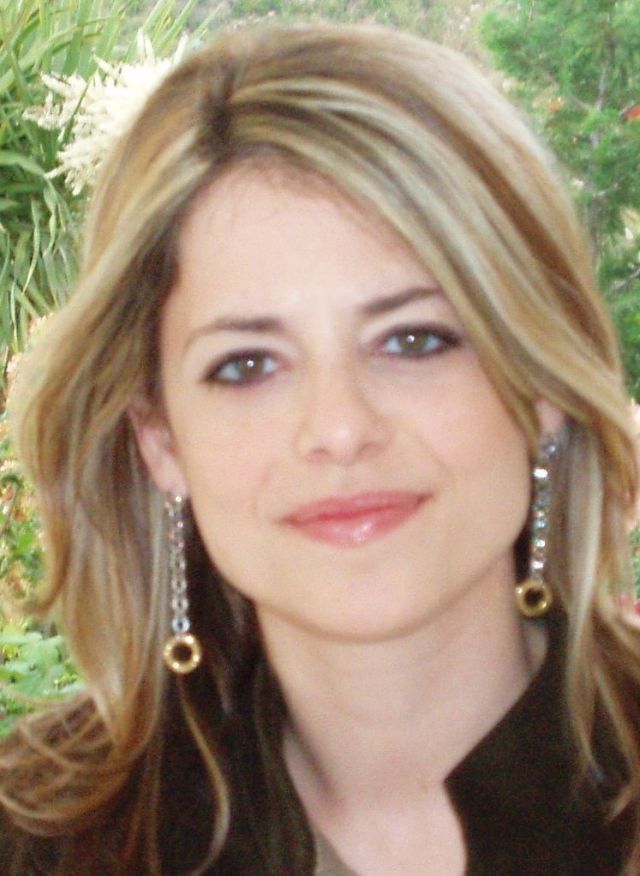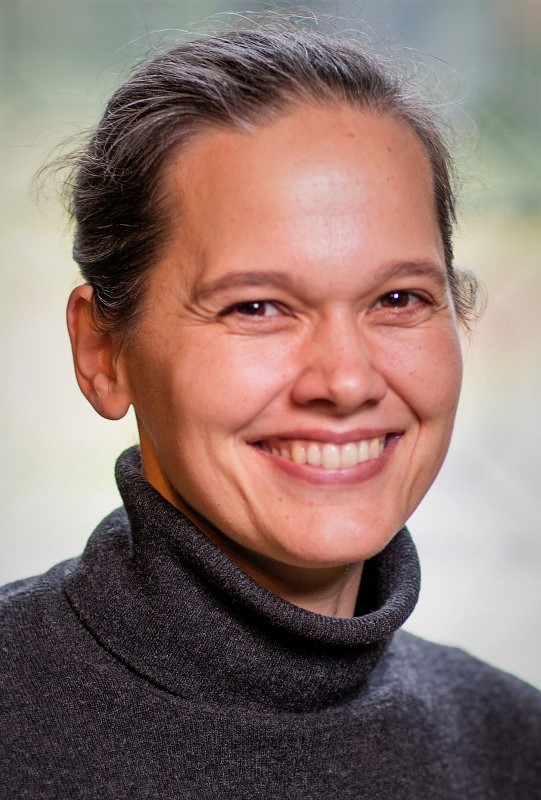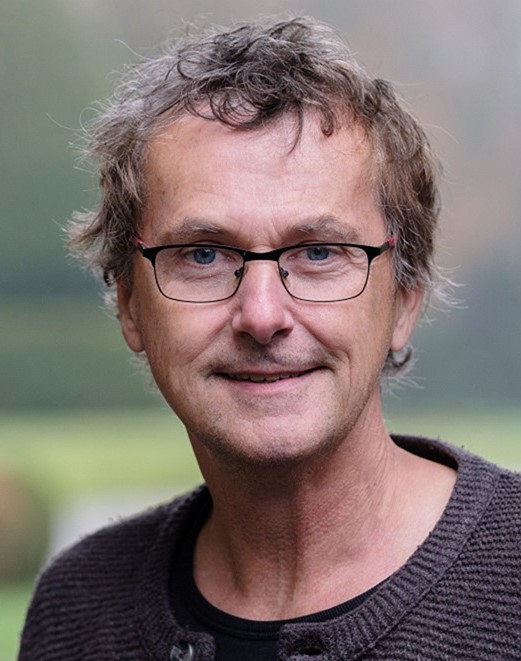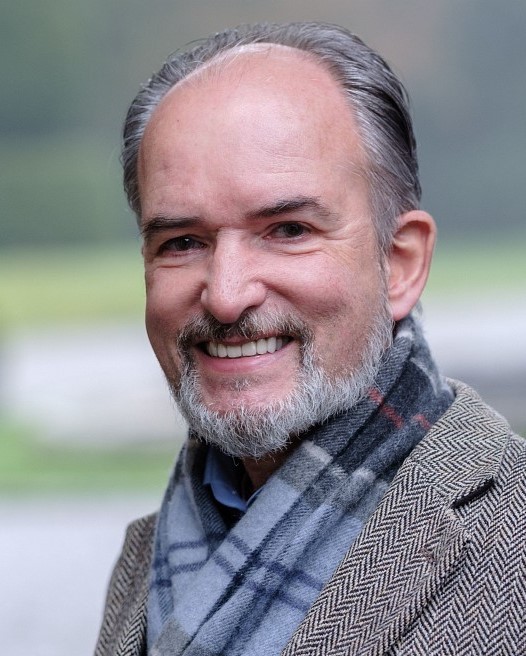A01Replication of large RNA virus genomes: key enzymes and mechanisms
John Ziebuhr
Prof. Dr. John Ziebuhr
Institut für Medizinische Virologie
Justus-Liebig-Universität Gießen
Schubertstraße 81
35392 Gießen
Phone: 0641-99 41200
E-Mail: john.ziebuhr(at)viro.med.uni-giessen(dot)de
The Nidovirales represent a monophyletic but highly diverged order of plus-strand RNA viruses that currently comprises the families Coronaviridae, Mesoniviridae, Arteriviridae, Tobaniviridae and 10 other families of vertebrate and invertebrate viruses that share common genome organization and expression strategies. Viruses in this order include many important animal and human pathogens, with SARS-CoV, SARS-CoV-2, and MERS-CoV being prominent examples. With genome sizes of up to 41 kilobases (kb), nidoviruses feature the largest RNA virus genomes known to date. Nidoviruses have evolved an unusually complex set of enzymes involved in viral RNA synthesis that is unparalleled in the RNA virus world and believed to be required for the expansion of RNA genomes to unprecedented sizes and efficient replication in special ecological niches. The nidovirus replication/transcription complex (RTC) consists of a large number of virally encoded enzymes. Some of these enzymes are unique to specific nidovirus (sub)families and not conserved in other RNA viruses. This also includes a 3'-5' exoribonuclease (ExoN) presumed to be involved in increasing the fidelity of nidovirus RNA synthesis. In the previous funding period, we characterized the biochemical properties of this enzyme for representative viruses of the Corona- and Tobaniviridae and extended our studies to other coronavirus nonstructural proteins (nsp7, 8, 9, 10, 12, 14) known to be essential components of the coronavirus RTC. Second, we identified and characterized two novel enzymatic activities that we confirmed to be essential for coronavirus replication, an RNA 3’-polyadenylyltranferase activity associated with nsp8 and a protein-specific NMP transferase activity associated with the NiRAN domain in nsp12. Third, we identified and characterized essential cis-active RNA elements involved in alphacoronavirus replication and, fourth, we embarked on the characterization of replicative proteins of other nidovirus families, focusing on the Mesoniviridae. In this context, we characterized the replicase polyprotein processing by the mesonivirus main protease, determined the crystal structure of this enzyme and identified the structural basis for its unusual substrate specificity. In the next funding period, we plan to advance our studies on the characterization of in vitro reconstituted nidovirus RTCs, involving corona- and mesonivirus protein complexes. We will investigate the mechanistic roles of protein-primed, RNA-primed and de novo initiation of viral RNA synthesis, focusing on the roles of specific viral proteins and cis-active RNA structural elements in these processes. Hypotheses derived from the in vitro studies will be validated by using genetically engineered human coronaviruses (HCoV-229E, SARS-CoV-2) and mesoniviruses as model systems. The studies will be based on biochemical approaches using recombinantly expressed proteins and protein complexes, RNA structure probing, and reverse-genetic approaches that are available in the laboratory or will be developed in the course of the project.
Project-related publications of the investigator:- Slanina H, Madhugiri R, Bylapudi G, Schultheiss K, Karl N, Gulyaeva A, Gorbalenya AE, Linne U, Ziebuhr J. 2021. Coronavirus replication-transcription complex: Vital and selective NMPylation of a conserved site in nsp9 by the NiRAN-RdRp subunit. Proc Natl Acad Sci U S A 118.
- Shaban MS, Muller C, Mayr-Buro C, Weiser H, Meier-Soelch J, Albert BV, Weber A, Linne U, Hain T, Babayev I, Karl N, Hofmann N, Becker S, Herold S, Schmitz ML, Ziebuhr J, Kracht M. 2021. Multi-level inhibition of coronavirus replication by chemical ER stress. Nat Commun 12:5536.
- Pfafenrot C, Schneider T, Muller C, Hung LH, Schreiner S, Ziebuhr J, Bindereif A. 2021. Inhibition of SARS-CoV-2 coronavirus proliferation by designer antisense-circRNAs. Nucleic Acids Res 49:12502-12516.
- Krichel B, Bylapudi G, Schmidt C, Blanchet C, Schubert R, Brings L, Koehler M, Zenobi R, Svergun D, Lorenzen K, Madhugiri R, Ziebuhr J, Uetrecht C. 2021. Hallmarks of Alpha- and Betacoronavirus non-structural protein 7+8 complexes. Sci Adv 7.
- Gorbalenya AE, Baker SC, Baric RS, de Groot RJ, Drosten C, Gulyaeva AA, Haagmans BL, Lauber C, Leontovich AM, Neuman BW, Penzar D, Poon LLM, Samborskiy DV, Sidorov IA, Sola I, Ziebuhr J. 2020. The species Severe acute respiratory syndrome-related coronavirus: classifying 2019-nCoV and naming it SARS-CoV-2. Nat Microbiol 5:536-544.
- Tvarogova J, Madhugiri R, Bylapudi G, Ferguson LJ, Karl N, Ziebuhr J. 2019. Identification and Characterization of a Human Coronavirus 229E Nonstructural Protein 8-Associated RNA 3'-Terminal Adenylyltransferase Activity. J Virol 93.
- Kanitz M, Blanck S, Heine A, Gulyaeva AA, Gorbalenya AE, Ziebuhr J, Diederich WE. 2019. Structural basis for catalysis and substrate specificity of a 3C-like cysteine protease from a mosquito mesonivirus. Virology 533:21-33.
- Madhugiri R, Karl N, Petersen D, Lamkiewicz K, Fricke M, Wend U, Scheuer R, Marz M, Ziebuhr J. 2018. Structural and functional conservation of cis-acting RNA elements in coronavirus 5'-terminal genome regions. Virology 517:44-55.
- Durzynska I, Sauerwald M, Karl N, Madhugiri R, Ziebuhr J. 2018. Characterization of a bafinivirus exoribonuclease activity. J Gen Virol 99:1253-1260.
- Snijder EJ, Decroly E, Ziebuhr J. 2016. The Nonstructural Proteins Directing Coronavirus RNA Synthesis and Processing. Adv Virus Res 96:59-126.
- Madhugiri R, Fricke M, Marz M, Ziebuhr J. 2016. Coronavirus cis-Acting RNA Elements. Adv Virus Res 96:127-163.
- Minskaia E, Hertzig T, Gorbalenya AE, Campanacci V, Cambillau C, Canard B, Ziebuhr J. 2006. Discovery of an RNA virus 3'->5' exoribonuclease that is critically involved in coronavirus RNA synthesis. Proc Natl Acad Sci U S A 103:5108-13.
A02Mechanisms and regulation of Ebola virus RNA synthesis
Nadine Biedenkopf, Roland Hartmann
Dr. Nadine Biedenkopf
Institut für Virologie
Philipps-Universität Marburg
Hans-Meerwein-Str. 2
35043 Marburg
Phone: 06421-28 25307
E-Mail:
nadine.biedenkopf(at)staff.uni-marburg(dot)de
Prof. Dr. Roland Hartmann
Institut für Pharmazeutische Chemie
Philipps-Universität Marburg
Marbacher Weg 6
35037 Marburg
Phone: 06421-28 25827
E-Mail: roland.hartmann(at)staff.uni-marburg(dot)de
Ebola virus (EBOV) RNA synthesis is a highly regulated process that involves the interplay of cis-acting elements in the viral genome with viral RNA binding proteins. While replication of the EBOV genome is driven by the viral polymerase L, its cofactor VP35 and the nucleoprotein NP, viral transcription additionally requires VP30, an EBOV-specific transcription factor whose activity is regulated via phosphorylation. In the second funding period, we were able to unveil the mechanism of VP30’s dynamic phosphorylation, identifying the serine/arginine-rich protein kinase 1 (SRPK1), and demonstrating that NP acts as recruitment factor for subunit B56 of the protein phosphatase 2A to dephosphorylate VP30 if simultaneously bound to NP. Based on the study of mutant minigenomes (MGs), we further demonstrated that hexamer phasing in the 3’-leader promoter is not only key to replication, but also to efficient transcription initiation. The genomic EBOV replication promotor is bipartite, consisting of promoter elements 1 (PE1) and 2 (PE2), that are separated by the transcription start sequence/site (TSS) for the first gene (NP) and a spacer sequence. We found that spacer extensions of up to ~54 nt are tolerated, while minor incremental stabilization of hairpin (HP) structures at the TSS rapidly abolished viral polymerase activity. Balanced viral transcription and replication can still occur when any potential RNA structure formation at the TSS is eliminated, and transcription remains VP30-dependent also in this case. In addition, the HP structure at the TSS of the native 3’-leader was demonstrated to be optimized for tight regulation by VP30 and to enable the switch from transcription to replication when VP30 is not part of the polymerase complex. Increasing stability of the HP impaired viral transcription. Short leader RNAs of 60-80 nt length are synthesized from the EBOV genome. Like replicative antigenomic RNA, leader RNAs are initiated opposite to the penultimate C residue at the genomic 3’-end and their amount is reduced in the presence of VP30, suggesting that leader RNAs are products of abortive antigenome synthesis.
For the next funding period, we would like to intensify our efforts regarding the interplay between cis-acting regulatory elements in the EBOV genome and viral proteins that contribute to RNA synthesis. We will address the following work packages: (i) Advanced investigations on the mechanistic role of structural elements and hexamer phasing in the 3’-leader promotor and at internal TSS by mutational analysis in the context of mono-, bi-, or tetracistronic MGs. Selected mutations will be introduced into the EBOV genome and recombinant viruses will be generated and characterized. (ii) Characterization of constraints for leader RNA synthesis by engineering the 3’-leader in terms of length, sequence and structure. (iii) To investigate the accessibility of the encapsidated RNA genome by the polymerase complex, we want to analyze protein-RNA interactions by iCLIP or PAR-CLIP, either using reconstituted complexes of recombinantly expressed polymerase complex and leader/trailer RNAs or nucleocapsids derived from tetracistronic MGs. (iv) We aim at establishing an in vitro transcription/replication system based on the expression of the viral polymerase complex in insect cells. Moreover, we will investigate (v) the functional role of VP35 helicase activity and (vi) will search for host factors interacting with the viral polymerase complex.
The herein proposed work packages will contribute to a deeper understanding of regulatory mechanisms involved in EBOV RNA synthesis.
Project-related publications of the investigators:- Bach S, Demper JC, Biedenkopf N, Becker S, Hartmann RK. 2021. RNA secondary structure at the transcription start site influences EBOV transcription initiation and replication in a length- and stability-dependent manner. RNA Biol 18:523-536.
- Takamatsu Y, Krahling V, Kolesnikova L, Halwe S, Lier C, Baumeister S, Noda T, Biedenkopf N, Becker S. 2020. Serine-Arginine Protein Kinase 1 Regulates Ebola Virus Transcription. mBio 11.
- Bach S, Demper JC, Grunweller A, Becker S, Biedenkopf N, Hartmann RK. 2020. Regulation of VP30-Dependent Transcription by RNA Sequence and Structure in the Genomic Ebola Virus Promoter. J Virol doi:10.1128/JVI.02215-20.
- Bach S, Biedenkopf N, Grunweller A, Becker S, Hartmann RK. 2020. Hexamer phasing governs transcription initiation in the 3'-leader of Ebola virus. RNA 26:439-453.
- Kruse T, Biedenkopf N, Hertz EPT, Dietzel E, Stalmann G, Lopez-Mendez B, Davey NE, Nilsson J, Becker S. 2018. The Ebola Virus Nucleoprotein Recruits the Host PP2A-B56 Phosphatase to Activate Transcriptional Support Activity of VP30. Mol Cell 69:136-145 e6.
- Lier C, Becker S, Biedenkopf N. 2017. Dynamic phosphorylation of Ebola virus VP30 in NP-induced inclusion bodies. Virology 512:39-47.
- Biedenkopf N, Lange-Grunweller K, Schulte FW, Weisser A, Muller C, Becker D, Becker S, Hartmann RK, Grunweller A. 2017. The natural compound silvestrol is a potent inhibitor of Ebola virus replication. Antiviral Res 137:76-81.
- Biedenkopf N, Hoenen T. 2017. Modeling the Ebolavirus Life Cycle with Transcription and Replication-Competent Viruslike Particle Assays. Methods Mol Biol 1628:119-131.
- Schlereth J, Grunweller A, Biedenkopf N, Becker S, Hartmann RK. 2016. RNA binding specificity of Ebola virus transcription factor VP30. RNA Biol 13:783-98.
- Biedenkopf N, Schlereth J, Grunweller A, Becker S, Hartmann RK. 2016. RNA Binding of Ebola Virus VP30 Is Essential for Activating Viral Transcription. J Virol 90:7481-7496.
A03Control of Hepatitis C Virus replication by viral and cellular factors
Michael Niepmann
Prof. Dr. Michael Niepmann
Biochemisches Institut
Justus-Liebig-Universität Gießen
Friedrichstraße 24
35392 Gießen
Phone: 0641-99 47471
E-Mail: michael.niepmann(at)biochemie.
med.uni-giessen(dot)de
Replication of Hepatitis C Virus (HCV) genome RNA in cells requires both the establishment and specific activity of viral RNA replication complexes and also viral countermeasures against the cellular innate immune system. We found that HCV stimulates expression of a long non-coding RNA (Lnc-ITM2C-1 or GCSIR) that in turn stimulates expression of a cannabinoid receptor, GPR55. This in turn suppresses expression of interferon-stimulated genes (ISGs) in favour of HCV replication. In this project, we aim at gaining deeper insight into the molecular mechanisms of the Lnc-ITM2C-1 - GPR55 - ISG regulation axis. Complementary to the early steps of the cellular response, we aim at elucidating the early steps of HCV RNA synthesis in cells, using full-length and subgenomic replicon systems. Ribosome pausing at two positions at the NS5B replicase stop codon and directly upstream is caused by inefficient codons, indicating that a slow-down of NS5B translation may be important for the initiation of minus strand synthesis. We want to identify HCV RNA cis-signals and long-range interactions involved in the balance of initial RNA genome translation starting at the genome´s 5´-end versus the initiation of RNA minus strand synthesis starting at the genome´s 3´-end.
- Niepmann M, Gerresheim GK. 2020. Hepatitis C Virus Translation Regulation. Int J Mol Sci 21.
- Gerresheim GK, Hess CS, Shalamova LA, Fricke M, Marz M, Andreev DE, Shatsky IN, Niepmann M. 2020. Ribosome Pausing at Inefficient Codons at the End of the Replicase Coding Region Is Important for Hepatitis C Virus Genome Replication. Int J Mol Sci 21.
- Hu P, Wilhelm J, Gerresheim GK, Shalamova LA, Niepmann M. 2019. Lnc-ITM2C-1 and GPR55 Are Proviral Host Factors for Hepatitis C Virus. Viruses 11.
- Gerresheim GK, Roeb E, Michel AM, Niepmann M. 2019. Hepatitis C Virus Downregulates Core Subunits of Oxidative Phosphorylation, Reminiscent of the Warburg Effect in Cancer Cells. Cells 8.
- Gerresheim GK, Bathke J, Michel AM, Andreev DE, Shalamova LA, Rossbach O, Hu P, Glebe D, Fricke M, Marz M, Goesmann A, Kiniry SJ, Baranov PV, Shatsky IN, Niepmann M. 2019. Cellular Gene Expression during Hepatitis C Virus Replication as Revealed by Ribosome Profiling. Int J Mol Sci 20.
- Fricke M, Gerst R, Ibrahim B, Niepmann M, Marz M. 2019. Global importance of RNA secondary structures in protein-coding sequences. Bioinformatics 35:579-583.
- Niepmann M, Shalamova LA, Gerresheim GK, Rossbach O. 2018. Signals Involved in Regulation of Hepatitis C Virus RNA Genome Translation and Replication. Front Microbiol 9:395.
- Jost I, Shalamova LA, Gerresheim GK, Niepmann M, Bindereif A, Rossbach O. 2018. Functional sequestration of microRNA-122 from Hepatitis C Virus by circular RNA sponges. RNA Biol 15:1032-1039.
- Nieder-Rohrmann A, Dunnes N, Gerresheim GK, Shalamova LA, Herchenrother A, Niepmann M. 2017. Cooperative enhancement of translation by two adjacent microRNA-122/Argonaute 2 complexes binding to the 5' untranslated region of hepatitis C virus RNA. J Gen Virol 98:212-224.
- Gerresheim GK, Dunnes N, Nieder-Rohrmann A, Shalamova LA, Fricke M, Hofacker I, Honer Zu Siederdissen C, Marz M, Niepmann M. 2017. microRNA-122 target sites in the hepatitis C virus RNA NS5B coding region and 3' untranslated region: function in replication and influence of RNA secondary structure. Cell Mol Life Sci 74:747-760.
A05Intracellular organization of Ebola virus RNA synthesis; formation, maturation and transport of viral RNP
Stephan Becker
Prof. Dr. Stephan Becker
Sprecher SFB 1021
Institut für Virologie
Philipps-Universität Marburg
Hans-Meerwein-Str. 2
35043 Marburg
Phone: 06421-28 66253
E-Mail:
becker(at)staff.uni-marburg(dot)de
Replication of viral genomic RNA results in the formation of progeny genomes that need to be packaged and transported to the sites of viral budding. Replication of negative-strand Ebola virus genomes takes place in inclusion bodies located close to the nucleus. During synthesis, genomes are encapsidated to form ribonucleoprotein (RNP) complexes which mature to transport-competent nucleocapsids (NCs) inside the inclusions. Although the virus-induced inclusions play an important role in the synthesis of filovirus RNA, their organization is not well understood. In the proposed project we will investigate the spatial and temporal organization of filoviral RNA synthesis, its packaging into RNPs, the molecular basis for RNP maturation to become transport-competent NCs, and which cellular and viral factors are involved in the recruitment of the actin-polymerizing machinery that drives the transport of NCs. Results gained with surrogate systems under BSL-2 conditions will be validated using recombinant filoviruses and CRISPR/Cas9 knock out cell lines under BSL-4 conditions. We will use proteomics to identify cellular proteins associated with encapsidated genomes, quantitative live cell imaging to understand the transport dynamics, super resolution microscopy (dSTORM), and correlative light and electron microscopy (CLEM) to visualize actin and actin-binding proteins at the NCs.
Project-related publications of the investigator:
- Takamatsu Y, Kolesnikova L, Schauflinger M, Noda T, Becker S. 2020. The Integrity of the YxxL Motif of Ebola Virus VP24 Is Important for the Transport of Nucleocapsid-Like Structures and for the Regulation of Viral RNA Synthesis. J Virol 94.
- Grikscheit K, Dolnik O, Takamatsu Y, Pereira AR, Becker S. 2020. Ebola Virus Nucleocapsid-Like Structures Utilize Arp2/3 Signaling for Intracellular Long-Distance Transport. Cells 9.
- Takamatsu Y, Dolnik O, Noda T, Becker S. 2019. A live-cell imaging system for visualizing the transport of Marburg virus nucleocapsid-like structures. Virol J 16:159.
- Takamatsu Y, Kolesnikova L, Becker S. 2018. Ebola virus proteins NP, VP35, and VP24 are essential and sufficient to mediate nucleocapsid transport. Proc Natl Acad Sci U S A 115:1075-1080.
- Mittler E, Schudt G, Halwe S, Rohde C, Becker S. 2018. A Fluorescently Labeled Marburg Virus Glycoprotein as a New Tool to Study Viral Transport and Assembly. J Infect Dis 218:S318-S326.
- Wan W, Kolesnikova L, Clarke M, Koehler A, Noda T, Becker S, Briggs JAG. 2017. Structure and assembly of the Ebola virus nucleocapsid. Nature 551:394-397.
- Schudt G, Dolnik O, Kolesnikova L, Biedenkopf N, Herwig A, Becker S. 2015. Transport of Ebolavirus Nucleocapsids Is Dependent on Actin Polymerization: Live-Cell Imaging Analysis of Ebolavirus-Infected Cells. J Infect Dis 212 Suppl 2:S160-6.
- Dolnik O, Kolesnikova L, Welsch S, Strecker T, Schudt G, Becker S. 2014. Interaction with Tsg101 is necessary for the efficient transport and release of nucleocapsids in marburg virus-infected cells. PLoS Pathog 10:e1004463.
- Schudt G, Kolesnikova L, Dolnik O, Sodeik B, Becker S. 2013. Live-cell imaging of Marburg virus-infected cells uncovers actin-dependent transport of nucleocapsids over long distances. Proc Natl Acad Sci U S A 110:14402-7.
- Bharat TA, Noda T, Riches JD, Kraehling V, Kolesnikova L, Becker S, Kawaoka Y, Briggs JA. 2012. Structural dissection of Ebola virus and its assembly determinants using cryo-electron tomography. Proc Natl Acad Sci U S A 109:4275-80.
Project area B:
Viral and cellular factors involved in RNA virus tropism and pathogenicity
B04Nipah virus replication in respiratory epithelial cells
Andrea Maisner
Prof. Dr. Andrea Maisner
Institut für Virologie
Philipps-Universität Marburg
Hans-Meerwein-Str. 2
35043 Marburg
Phone: 06421-28 65360
E-Mail: maisner(at)staff.uni-marburg(dot)de
The Malaysian Nipah virus (NiV) strain, a BSL-4 classified zoonotic paramyxovirus, emerged for the first time in 1998 and caused clinical diseases in pigs, which spread the infection to humans. While pigs developed an acute respiratory disease due to a highly efficient virus replication and associated inflammation processes in the airway epithelium, humans developed severe encephalitis with limited respiratory symptoms and little virus shedding via respiratory secretions. These differences in the clinical symptoms suggest species-specific differences in the infection of respiratory epithelial cells. Aiming to identify relevant host factors, we compared NiV infection in primary airway cultures of both species in terms of virus replication efficiencies and innate immune responses. A major finding was that NiV infections resulted in the expression of type III interferons (IFN-λ) in cells of both species with substantial quantitative differences. IFN induction was much lower in porcine airway cells, indicating an inherently limited IFN response. Surprisingly, the expression of proinflammatory cytokines (IL-6, IL-8) was not decreased in porcine epithelia. To evaluate the model that limited antiviral activity in porcine airway cells in the presence of a functional proinflammatory cytokine response is one of the species-specific factors contributing to the differences in NiV replication and virus-induced inflammatory processes, we will investigate the underlying signaling pathways in porcine and human airway epithelia. Here, we will focus on IFN-dependent and -independent expression of antiviral genes and proinflammatory cytokines in infected and uninfected bystander cells. The second part of the project is based on our recent findings that NiV not only forms cytosolic inclusion bodies (IBs), as is typical for all mononegaviruses, but additionally builds inclusions at the plasma membrane. Since the functional role of the two different types of inclusions in airway epithelia is still unknown, we will investigate their role in triggering or counteracting innate immune responses.
Project-related publications of the investigator:- Becker N, Heiner A, & Maisner A. 2022. Cytosolic Nipah Virus Inclusion Bodies Recruit Proteins Without Using Canonical Aggresome Pathways. Front. Virol. 1:821004.
- Ringel M, Behner L, Heiner A, Sauerhering L, Maisner A. 2020. Replication of a Nipah Virus Encoding a Nuclear-Retained Matrix Protein. J Infect Dis 221:S389-S394.
- Elvert M, Sauerhering L, Maisner A. 2020. Cytokine Induction in Nipah Virus-Infected Primary Human and Porcine Bronchial Epithelial Cells. J Infect Dis 221:S395-S400.
- Ringel M, Heiner A, Behner L, Halwe S, Sauerhering L, Becker N, Dietzel E, Sawatsky B, Kolesnikova L, Maisner A. 2019. Nipah virus induces two inclusion body populations: Identification of novel inclusions at the plasma membrane. PLoS Pathog 15:e1007733.
- Hoffmann M, Nehlmeier I, Brinkmann C, Krahling V, Behner L, Moldenhauer AS, Kruger N, Nehls J, Schindler M, Hoenen T, Maisner A, Becker S, Pohlmann S. 2019. Tetherin Inhibits Nipah Virus but Not Ebola Virus Replication in Fruit Bat Cells. J Virol 93.
- Behner L, Zimmermann L, Ringel M, Weis M, Maisner A. 2018. Formation of high-order oligomers is required for functional bioactivity of an African bat henipavirus surface glycoprotein. Vet Microbiol 218:90-97.
- Sauerhering L, Muller H, Behner L, Elvert M, Fehling SK, Strecker T, Maisner A. 2017. Variability of interferon-lambda induction and antiviral activity in Nipah virus infected differentiated human bronchial epithelial cells of two human donors. J Gen Virol 98:2447-2453.
- Sauerhering L, Zickler M, Elvert M, Behner L, Matrosovich T, Erbar S, Matrosovich M, Maisner A. 2016. Species-specific and individual differences in Nipah virus replication in porcine and human airway epithelial cells. J Gen Virol 97:1511-1519.
B05Lassa virus: host cell tropism and molecular pathogenesis
Thomas Strecker
Dr. Thomas Strecker
Institut für Virologie
Philipps-Universität Marburg
Hans-Meerwein-Str. 2
35043 Marburg
Phone: 06421-28 65182
E-Mail:
strecker(at)staff.uni-marburg(dot)de
Lassa virus (LASV) is a zoonotic, hemorrhagic fever-causing virus that is endemic to West Africa. Approved vaccines or specific antiviral drugs suitable to combat these infections are not available. The primary transmission route of LASV from its reservoir host to humans involves direct exposure to virus-containing rodent excretions. Although the initial infection involves the respiratory tract through inhalation of contaminated dust or fomites, information on LASV infection of human respiratory epithelial cells is limited. In the current funding period, the Strecker group observed that LASV infects polarized bronchial epithelial cells via the apical or basolateral side, while progeny virus particles are released predominantly from the apical surface. Goblet cells and basal cells were identified as initial LASV target cells in a primary human bronchial epithelial cell culture model. Together with collaborators, the Strecker group also solved the three-dimensional architecture of LASV virions and the spike envelope glycoprotein using high-resolution electron cryomicroscopy and tomography techniques.
Project-related publications of the investigator:- Thom R, Tipton T, Strecker T, Hall Y, Akoi Bore J, Maes P, Raymond Koundouno F, Fehling SK, Krahling V, Steeds K, Varghese A, Bailey G, Matheson M, Kouyate S, Cone M, Moussa Keita B, Kouyate S, Richard Ablam A, Laenen L, Vergote V, Guiver M, Timothy J, Atkinson B, Ottowell L, Richards KS, Bosworth A, Longet S, Mellors J, Pannetier D, Duraffour S, Munoz-Fontela C, Sow O, Koivogui L, Newman E, Becker S, Sprecher A, Raoul H, Hiscox J, Henao-Restrepo AM, Sakoba K, Magassouba N, Gunther S, Kader Konde M, Carroll MW. 2021. Longitudinal antibody and T cell responses in Ebola virus disease survivors and contacts: an observational cohort study. Lancet Infect Dis 21:507-516.
- Olayemi A, Adesina AS, Strecker T, Magassouba N, Fichet-Calvet E. 2020. Determining Ancestry between Rodent- and Human-Derived Virus Sequences in Endemic Foci: Towards a More Integral Molecular Epidemiology of Lassa Fever within West Africa. Biology (Basel) 9.
- Muller H, Fehling SK, Dorna J, Urbanowicz RA, Oestereich L, Krebs Y, Kolesnikova L, Schauflinger M, Krahling V, Magassouba N, Fichet-Calvet E, Ball JK, Kaufmann A, Bauer S, Becker S, von Messling V, Strecker T. 2020. Adjuvant formulated virus-like particles expressing native-like forms of the Lassa virus envelope surface glycoprotein are immunogenic and induce antibodies with broadly neutralizing activity. NPJ Vaccines 5:71.
- Blok AJ, Gurnani P, Xenopoulos A, Burroughs L, Duncan J, Urbanowicz RA, Tsoleridis T, Muller-Krauter H, Strecker T, Ball JK, Alexander C, Alexander MR. 2020. Polymer microarrays rapidly identify competitive adsorbents of virus-like particles. Biointerphases 15:061005.
- Timothy JWS, Hall Y, Akoi-Bore J, Diallo B, Tipton TRW, Bower H, Strecker T, Glynn JR, Carroll MW. 2019. Early transmission and case fatality of Ebola virus at the index site of the 2013-16 west African Ebola outbreak: a cross-sectional seroprevalence survey. Lancet Infect Dis 19:429-438.
- Whitmer SLM, Strecker T, Cadar D, Dienes HP, Faber K, Patel K, Brown SM, Davis WG, Klena JD, Rollin PE, Schmidt-Chanasit J, Fichet-Calvet E, Noack B, Emmerich P, Rieger T, Wolff S, Fehling SK, Eickmann M, Mengel JP, Schultze T, Hain T, Ampofo W, Bonney K, Aryeequaye JND, Ribner B, Varkey JB, Mehta AK, Lyon GM, 3rd, Kann G, De Leuw P, Schuettfort G, Stephan C, Wieland U, Fries JWU, Kochanek M, Kraft CS, Wolf T, Nichol ST, Becker S, Stroher U, Gunther S. 2018. New Lineage of Lassa Virus, Togo, 2016. Emerg Infect Dis 24:599-602.
- Watanabe Y, Raghwani J, Allen JD, Seabright GE, Li S, Moser F, Huiskonen JT, Strecker T, Bowden TA, Crispin M. 2018. Structure of the Lassa virus glycan shield provides a model for immunological resistance. Proc Natl Acad Sci U S A 115:7320-7325.
- Sauerhering L, Muller H, Behner L, Elvert M, Fehling SK, Strecker T, Maisner A. 2017. Variability of interferon-lambda induction and antiviral activity in Nipah virus infected differentiated human bronchial epithelial cells of two human donors. J Gen Virol 98:2447-2453.
- Huber M, Suprunenko T, Ashhurst T, Marbach F, Raifer H, Wolff S, Strecker T, Viengkhou B, Jung SR, Obermann HL, Bauer S, Xu HC, Lang PA, Tom A, Lang KS, King NJC, Campbell IL, Hofer MJ. 2017. IRF9 Prevents CD8(+) T Cell Exhaustion in an Extrinsic Manner during Acute Lymphocytic Choriomeningitis Virus Infection. J Virol 91.
B06Functional comparison of the NSs virulence factors from the genus Phlebovirus
Friedemann Weber
Prof. Dr. Friedemann Weber
Institut für Virologie
FB Veterinärmedizin
Justus-Liebig-Universität Gießen
Schubertstraße 81
35392 Gießen
Phone: 0641-99 38350
E-mail: friedemann.weber(at)vetmed.uni-giessen(dot)de
The genus Phlebovirus (family Phenuiviridae, order Bunyavirales) contains virus species covering a wide spectrum of virulence. Rift Valley fever virus (RVFV) is highly pathogenic representative, whereas the Sandfly fever Sicilian virus (SFSV) displays an intermediate level of virulence. Although the importance of phleboviruses is increasingly recognized, we are only beginning to understand the mechanisms of pathogenicity. A key virulence factor of phleboviruses is the non-structural protein NSs, an inhibitor of the antiviral type I interferon (IFN) system. In the previous two funding periods, the Weber group identified the mechanisms by which the NSs proteins of both RVFV and SFSV inhibit the transactivation of the IFN genes and abrogate the antiviral protein kinase R (PKR) pathway. For RVFV, the NSs was found to recruit several E3 ubiquitin ligases of the F-Box type in order to destroy the general host cell transcription factor TF-IIH and the antiviral mRNA translation inhibitor PKR. SFSV NSs, by contrast, is occluding the DNA-binding domain of the IFN transcription factor IRF-3 to inhibit IFN induction, and also binds to the translation initiation factor eIF2B to protect the ribosomal machinery against the inhibitory PKR signaling. Expectedly, phleboviruses with a deleted NSs gene are strong activators of the IFN system. Using an NSs-deleted RVFV, the viral panhandle was identified the main trigger of IFN induction, RIG-I as its cytoplasmic sensor, and the full set of upregulated innate immunity genes was characterized by transcriptome analysis.
Project-related publications of the investigator:- Wuerth JD, Weber F. 2022. Shielding the mRNA-translation factor eIF2B from inhibitory p-eIF2 as a viral strategy to evade protein kinase R-mediated innate immunity. Curr Opin Immunol 78:102251.
- Shalamova L, Felgenhauer U, Wilhelm J, Schaubmar AR, Buettner K, Schoen A, Widera M, Ciesek S, Weber F. 2022. Omicron variant of SARS-CoV-2 exhibits an increased resilience to the antiviral type I interferon response. PNAS Nexus 1:67.
- Hufsky F, Beslic D, Boeckaerts D, Duchene S, Gonzalez-Tortuero E, Gruber AJ, Guo J, Jansen D, Juma J, Kongkitimanon K, Luque A, Ritsch M, Lencioni Lovate G, Nishimura L, Pas C, Domingo E, Hodcroft E, Lemey P, Sullivan MB, Weber F, Gonzalez-Candelas F, Krautwurst S, Perez-Cataluna A, Randazzo W, Sanchez G, Marz M. 2022. The International Virus Bioinformatics Meeting 2022. Viruses 14.
- Hollidge BS, Salzano MV, Ibrahim JM, Fraser JW, Wagner V, Leitner NE, Weiss SR, Weber F, Gonzalez-Scarano F, Soldan SS. 2022. Targeted Mutations in the Fusion Peptide Region of La Crosse Virus Attenuate Neuroinvasion and Confer Protection against Encephalitis. Viruses 14.
- Wuerth JD, Weber F. 2021. NSs of the mildly virulent sandfly fever Sicilian virus is unable to inhibit interferon signaling and upregulation of interferon-stimulated genes. J Gen Virol 102.
- Kashiwagi K, Shichino Y, Osaki T, Sakamoto A, Nishimoto M, Takahashi M, Mito M, Weber F, Ikeuchi Y, Iwasaki S, Ito T. 2021. eIF2B-capturing viral protein NSs suppresses the integrated stress response. Nat Commun 12:7102.
- Borrego B, Moreno S, de la Losa N, Weber F, Brun A. 2021. The Change P82L in the Rift Valley Fever Virus NSs Protein Confers Attenuation in Mice. Viruses 13.
- Wuerth JD, Habjan M, Kainulainen M, Berisha B, Bertheloot D, Superti-Furga G, Pichlmair A, Weber F. 2020. eIF2B as a Target for Viral Evasion of PKR-Mediated Translation Inhibition. mBio 11.
- Schoen A, Lau S, Verbruggen P, Weber F. 2020. Elongin C Contributes to RNA Polymerase II Degradation by the Interferon Antagonist NSs of La Crosse Orthobunyavirus. J Virol 94.
- Lau S, Weber F. 2020. Nuclear pore protein Nup98 is involved in replication of Rift Valley fever virus and nuclear import of virulence factor NSs. J Gen Virol 101:712-716.
- Barr, JD, Weber F., Schmaljohn CS. 2020. Bunyaviruses. Chapter 17, Fields Virology, 7th edition. Lippincott Williams & Wilkins – Philadelphia, USA.
- Wuerth JD, Weber F. 2019. Ferreting out viral pathogenesis. Nat Microbiol 4:384-385.
- Jones R, Lessoued S, Meier K, Devignot S, Barata-Garcia S, Mate M, Bragagnolo G, Weber F, Rosenthal M, Reguera J. 2019. Structure and function of the Toscana virus cap-snatching endonuclease. Nucleic Acids Res 47:10914-10930.
- Holzer M, Schoen A, Wulle J, Muller MA, Drosten C, Marz M, Weber F. 2019. Virus- and Interferon Alpha-Induced Transcriptomes of Cells from the Microbat Myotis daubentonii. iScience 19:647-661.
- Frantz R, Teubner L, Schultze T, La Pietra L, Muller C, Gwozdzinski K, Pillich H, Hain T, Weber-Gerlach M, Panagiotidis GD, Mostafa A, Weber F, Rohde M, Pleschka S, Chakraborty T, Abu Mraheil M. 2019. The secRNome of Listeria monocytogenes Harbors Small Noncoding RNAs That Are Potent Inducers of Beta Interferon. mBio 10.
- Wuerth JD, Habjan M, Wulle J, Superti-Furga G, Pichlmair A, Weber F. 2018. NSs Protein of Sandfly Fever Sicilian Phlebovirus Counteracts Interferon (IFN) Induction by Masking the DNA-Binding Domain of IFN Regulatory Factor 3. J Virol 92.
- Kiening M, Weber F, Frishman D. 2017. Conserved RNA structures in the intergenic regions of ambisense viruses. Sci Rep 7:16625.
- Ferron F, Weber F, de la Torre JC, Reguera J. 2017. Transcription and replication mechanisms of Bunyaviridae and Arenaviridae L proteins. Virus Res 234:118-134.
B07The protease specificity of influenza virus hemagglutinin and coronavirus spike protein with monobasic cleavage site: underlying mechanisms and host proteases involved
Eva Böttcher-Friebertshäuser
Prof. Dr. Eva Böttcher-Friebertshäuser
Institut für Virologie
Philipps-Universität Marburg
Hans-Meerwein-Str. 2
35043 Marburg
Phone: 06421-28 66019
E-mail: friebertshaeuser(at)staff.uni-marburg(dot)de
Proteolytic activation of enveloped viruses including influenza A and B virus (IAV/IBV) and coronaviruses (CoV) by host cell proteases is crucial for virus infectivity. We previously demonstrated in vitro that the transmembrane serine protease 2 (TMPRSS2) cleaves influenza virus hemagglutinin possessing a monobasic cleavage site. Further studies by us and others revealed that TMPRSS2 is capable of activating many respiratory viruses. Recently, we identified TMPRSS2 as major activating protease of IAV of almost all 16 HA-subtypes in human and murine airway cells and of IBV in human lung. Having established the crucial role of TMPRSS2 in influenza virus activation in lower human airways we now want to validate its role in IAV/IBV activation in the human upper respiratory tract. Furthermore, we aim at investigating the tissue distribution and role of TMPRSS2 orthologues in IAV activation in chicken and ducks that are important IAV hosts.
Project-related publications of the investigator:- Bestle D, Limburg H, Kruhl D, Harbig A, Stein DA, Moulton H, Matrosovich M, Abdelwhab EM, Stech J, Bottcher-Friebertshauser E. 2021. Hemagglutinins of Avian Influenza Viruses Are Proteolytically Activated by TMPRSS2 in Human and Murine Airway Cells. J Virol 95:e0090621.
- Harbig A, Mernberger M, Bittel L, Pleschka S, Schughart K, Steinmetzer T, Stiewe T, Nist A, Bottcher-Friebertshauser E. 2020. Transcriptome profiling and protease inhibition experiments identify proteases that activate H3N2 influenza A and influenza B viruses in murine airways. J Biol Chem 295:11388-11407.
- Bestle D, Heindl MR, Limburg H, Van Lam van T, Pilgram O, Moulton H, Stein DA, Hardes K, Eickmann M, Dolnik O, Rohde C, Klenk HD, Garten W, Steinmetzer T, Bottcher-Friebertshauser E. 2020. TMPRSS2 and furin are both essential for proteolytic activation of SARS-CoV-2 in human airway cells. Life Sci Alliance 3.
- Limburg H, Harbig A, Bestle D, Stein DA, Moulton HM, Jaeger J, Janga H, Hardes K, Koepke J, Schulte L, Koczulla AR, Schmeck B, Klenk HD, Bottcher-Friebertshauser E. 2019. TMPRSS2 Is the Major Activating Protease of Influenza A Virus in Primary Human Airway Cells and Influenza B Virus in Human Type II Pneumocytes. J Virol 93.
- Bottcher-Friebertshauser E. 2018. Membrane-Anchored Serine Proteases: Host Cell Factors in Proteolytic Activation of Viral Glycoproteins. In: Böttcher-Friebertshäuser E., Garten W., Klenk H. (eds) Activation of Viruses by Host Proteases. Springer, Cham, p.153-203.
- Tarnow C, Engels G, Arendt A, Schwalm F, Sediri H, Preuss A, Nelson PS, Garten W, Klenk HD, Gabriel G, Bottcher-Friebertshauser E. 2014. TMPRSS2 is a host factor that is essential for pneumotropism and pathogenicity of H7N9 influenza A virus in mice. J Virol 88:4744-51.
- Baron J, Tarnow C, Mayoli-Nussle D, Schilling E, Meyer D, Hammami M, Schwalm F, Steinmetzer T, Guan Y, Garten W, Klenk HD, Bottcher-Friebertshauser E. 2013. Matriptase, HAT, and TMPRSS2 activate the hemagglutinin of H9N2 influenza A viruses. J Virol 87:1811-20.
- Bottcher-Friebertshauser E, Lu Y, Meyer D, Sielaff F, Steinmetzer T, Klenk HD, Garten W. 2012. Hemagglutinin activating host cell proteases provide promising drug targets for the treatment of influenza A and B virus infections. Vaccine 30:7374-80.
- Bottcher-Friebertshauser E, Stein DA, Klenk HD, Garten W. 2011. Inhibition of influenza virus infection in human airway cell cultures by an antisense peptide-conjugated morpholino oligomer targeting the hemagglutinin-activating protease TMPRSS2. J Virol 85:1554-62.
- Bottcher-Friebertshauser E, Freuer C, Sielaff F, Schmidt S, Eickmann M, Uhlendorff J, Steinmetzer T, Klenk HD, Garten W. 2010. Cleavage of influenza virus hemagglutinin by airway proteases TMPRSS2 and HAT differs in subcellular localization and susceptibility to protease inhibitors. J Virol 84:5605-14.
- Bottcher E, Matrosovich T, Beyerle M, Klenk HD, Garten W, Matrosovich M. 2006. Proteolytic activation of influenza viruses by serine proteases TMPRSS2 and HAT from human airway epithelium. J Virol 80:9896-8.
B08Structural and functional factors determining entry and replication of hepatitis D and B viruses during co-infection
Dieter Glebe, Joachim Geyer
Prof. Dr. Dieter Glebe
Institut für Medizinische Virologie
Justus-Liebig-Universität Gießen
Schubertstraße 81
35392 Gießen
Phone: 0641-99 41246
E-Mail:
dieter.glebe(at)viro.med.uni-giessen(dot)de
Prof. Dr. Joachim Geyer
Institut für Pharmakologie und Toxikologie
Justus-Liebig-Universität Gießen
Schubertstraße 81
35392 Gießen
Phone: 0641-99 38404
E-Mail:
joachim.m.geyer(at)vetmed.uni-giessen(dot)de
Human hepatitis D virus (HDV) is a small defective RNA-virus that is dependent on the presence of hepatitis B virus (HBV) as a helper virus in coinfected patients. Both viruses infect hepatocytes within the liver via blood and sexual contacts and can cause acute and chronic liver disease resulting in liver cirrhosis and liver cancer. Worldwide, at least 12 million people are chronically infected with HDV with limited therapeutic options available. The completion of the full HDV replication cycle is dependent on a helper virus and cellular host factors within co-infected hepatocytes. Since HDV uses HBV surface proteins (HBsAg) for envelopment, budding and secretion of virions into the blood, both viruses are supposed to use comparable entry pathways for infection. The liver-specific bile acid transporter (NTCP) was discovered in 2012 as high-affinity HBV/HDV receptor and was first confirmed to be essential for HDV infection in 2013 by the principal investigators of this proposal. Our establishment of highly susceptible human hepatoma cells stably expressing NTCP at physiological levels enabled us to study viral binding, entry and replication of HDV and HBV at the cellular level. In addition to NTCP, other cellular cofactors appear to be involved in the quantitative regulation of virus entry via NTCP, but these have not yet been fully identified and characterized. Recently, interaction of HDV with envelope proteins of other coinfecting hepatotropic viruses, e.g. hepatitis C virus (HCV), has been demonstrated, suggesting that HDV might alter its infection pattern by switching viral surface proteins. Besides human HDV, HDV-like viruses have recently been found in other vertebrates (e.g. snakes, birds). In this context, we have isolated the first non-human mammalian HDV isolate from rodents, which is closely related to human HDV with robust replication in human liver cells, but its replication pattern has not yet been characterized. During the next funding period, we will (i) identify and analyze cellular NTCP cofactors defining viral binding and entry, (ii) characterize structural determinants of the overlapping virus/substrate binding domains of NTCP, (iii) compare replication of HDV with phylogenetically related animal HDV, and (iv) analyze determinants of HDV packaging upon coinfection with other hepatotropic viruses (HBV/HCV).
Project-related publications of the investigators:- Rasche A, Lehmann F, Goldmann N, Nagel M, Moreira-Soto A, Nobach D, de Oliveira Carneiro I, Osterrieder N, Greenwood AD, Steinmann E, Lukashev AN, Schuler G, Glebe D, Drexler JF, Equid HBVC. 2021. A hepatitis B virus causes chronic infections in equids worldwide. Proc Natl Acad Sci U S A 118.
- Pfluger LS, Norz D, Volz T, Giersch K, Giese A, Goldmann N, Glebe D, Bockmann JH, Pfefferle S, Dandri M, Schulze Zur Wiesch J, Lutgehetmann M. 2021. Clinical establishment of a laboratory developed quantitative HDV PCR assay on the cobas6800 high-throughput system. JHEP Rep 3:100356.
- Pfefferkorn M, Schott T, Bohm S, Deichsel D, Felkel C, Gerlich WH, Glebe D, Wat C, Pavlovic V, Heyne R, Berg T, van Bommel F. 2021. Composition of HBsAg is predictive of HBsAg loss during treatment in patients with HBeAg-positive chronic hepatitis B. J Hepatol 74:283-292.
- Palatini M, Muller SF, Lowjaga K, Noppes S, Alber J, Lehmann F, Goldmann N, Glebe D, Geyer J. 2021. Mutational Analysis of the GXXXG/A Motifs in the Human Na(+)/Taurocholate Co-Transporting Polypeptide NTCP on Its Bile Acid Transport Function and Hepatitis B/D Virus Receptor Function. Front Mol Biosci 8:699443.
- Lowjaga K, Kirstgen M, Muller SF, Goldmann N, Lehmann F, Glebe D, Geyer J. 2021. Long-term trans-inhibition of the hepatitis B and D virus receptor NTCP by taurolithocholic acid. Am J Physiol Gastrointest Liver Physiol 320:G66-G80.
- Kirstgen M, Muller SF, Lowjaga K, Goldmann N, Lehmann F, Alakurtti S, Yli-Kauhaluoma J, Baringhaus KH, Krieg R, Glebe D, Geyer J. 2021. Identification of Novel HBV/HDV Entry Inhibitors by Pharmacophore- and QSAR-Guided Virtual Screening. Viruses 13.
- Kirstgen M, Lowjaga K, Muller SF, Goldmann N, Lehmann F, Glebe D, Baringhaus KH, Geyer J. 2021. Hepatitis D Virus Entry Inhibitors Based on Repurposing Intestinal Bile Acid Reabsorption Inhibitors. Viruses 13.
- Grosser G, Muller SF, Kirstgen M, Doring B, Geyer J. 2021. Substrate Specificities and Inhibition Pattern of the Solute Carrier Family 10 Members NTCP, ASBT and SOAT. Front Mol Biosci 8:689757.
- Glebe D, Goldmann N, Lauber C, Seitz S. 2021. HBV evolution and genetic variability: Impact on prevention, treatment and development of antivirals. Antiviral Res 186:104973.
- Paraskevopoulou S, Pirzer F, Goldmann N, Schmid J, Corman VM, Gottula LT, Schroeder S, Rasche A, Muth D, Drexler JF, Heni AC, Eibner GJ, Page RA, Jones TC, Muller MA, Sommer S, Glebe D, Drosten C. 2020. Mammalian deltavirus without hepadnavirus coinfection in the neotropical rodent Proechimys semispinosus. Proc Natl Acad Sci U S A 117:17977-17983.
- Kirstgen M, Lowjaga K, Muller SF, Goldmann N, Lehmann F, Alakurtti S, Yli-Kauhaluoma J, Glebe D, Geyer J. 2020. Selective hepatitis B and D virus entry inhibitors from the group of pentacyclic lupane-type betulin-derived triterpenoids. Sci Rep 10:21772.
- Jensen O, Ansari S, Gebauer L, Muller SF, Lowjaga K, Geyer J, Tzvetkov MV, Brockmoller J. 2020. A double-Flp-in method for stable overexpression of two genes. Sci Rep 10:14018.
- Rasche A, Lehmann F, Konig A, Goldmann N, Corman VM, Moreira-Soto A, Geipel A, van Riel D, Vakulenko YA, Sander AL, Niekamp H, Kepper R, Schlegel M, Akoua-Koffi C, Souza B, Sahr F, Olayemi A, Schulze V, Petraityte-Burneikiene R, Kazaks A, Lowjaga K, Geyer J, Kuiken T, Drosten C, Lukashev AN, Fichet-Calvet E, Ulrich RG, Glebe D, Drexler JF. 2019. Highly diversified shrew hepatitis B viruses corroborate ancient origins and divergent infection patterns of mammalian hepadnaviruses. Proc Natl Acad Sci U S A 116:17007-17012.
- Noppes S, Muller SF, Bennien J, Holtemeyer M, Palatini M, Leidolf R, Alber J, Geyer J. 2019. Homo- and heterodimerization is a common feature of the solute carrier family SLC10 members. Biol Chem 400:1371-1384.
- Gerresheim GK, Bathke J, Michel AM, Andreev DE, Shalamova LA, Rossbach O, Hu P, Glebe D, Fricke M, Marz M, Goesmann A, Kiniry SJ, Baranov PV, Shatsky IN, Niepmann M. 2019. Cellular Gene Expression during Hepatitis C Virus Replication as Revealed by Ribosome Profiling. Int J Mol Sci 20.
- Pfefferkorn M, Bohm S, Schott T, Deichsel D, Bremer CM, Schroder K, Gerlich WH, Glebe D, Berg T, van Bommel F. 2018. Quantification of large and middle proteins of hepatitis B virus surface antigen (HBsAg) as a novel tool for the identification of inactive HBV carriers. Gut 67:2045-2053.
- Nielsen KO, Mirza AH, Kaur S, Jacobsen KS, Winther TN, Glebe D, Pociot F, Hogh B, Storling J. 2018. Hepatitis B virus suppresses the secretion of insulin-like growth factor binding protein 1 to facilitate anti-apoptotic IGF-1 effects in HepG2 cells. Exp Cell Res 370:399-408.
- Muller SF, Konig A, Doring B, Glebe D, Geyer J. 2018. Characterisation of the hepatitis B virus cross-species transmission pattern via Na+/taurocholate co-transporting polypeptides from 11 New World and Old World primate species. PLoS One 13:e0199200.
- de Carvalho Dominguez Souza BF, Konig A, Rasche A, de Oliveira Carneiro I, Stephan N, Corman VM, Roppert PL, Goldmann N, Kepper R, Muller SF, Volker C, de Souza AJS, Gomes-Gouvea MS, Moreira-Soto A, Stocker A, Nassal M, Franke CR, Rebello Pinho JR, Soares M, Geyer J, Lemey P, Drosten C, Netto EM, Glebe D, Drexler JF. 2018. A novel hepatitis B virus species discovered in capuchin monkeys sheds new light on the evolution of primate hepadnaviruses. J Hepatol 68:1114-1122.
B10Function of lipid droplets in replication and pathogenesis of neurotropic flaviviruses
Eva Herker
Prof. Dr. Eva Herker
Institut für Virologie
Philipps-Universität Marburg
Hans-Meerwein-Str. 2
35043 Marburg
Phone: 06421-28 66019
E-Mail:
eva.herker(at)staff.uni-marburg(dot)de
Viruses rely on host lipid metabolic pathways for replication. Lipid droplets are the main cellular storage organelles of neutral lipids and central hubs of lipid trafficking. The Herker group investigates the function of lipid droplets in virus infection and pathogenesis and how viruses rewire cellular metabolic pathways for successful replication. Capsid proteins from hepatitis C virus (HCV) and different flavivirus family members localize to lipid droplets and, depending on cell types and viruses, lipid droplet accumulation and degradation have been observed in infected cells. However, it is currently unknown, how neurotropic flaviviruses interact with the intricate lipid metabolism of brain cells. This project aims to i) characterize host cell lipid droplets after expression of the capsid protein C or during West Nile virus (WNV), Zika virus (ZIKV), and tick-borne encephalitis virus (TBEV) infection in different cell types, such as neuron and astrocyte cell lines, human neurons and astrocytes differentiated from stem cells, and murine primary cells, ii) determine if WNV, ZIKV, and TBEV infection is inhibited by interference with lipid droplet formation and/or lipid mobilization, and iii) elucidate if virus-induced pathogenic effects are in part due to metabolic disturbance.
Project-related publications of the investigator:- Herker E, Vieyres G, Beller M, Krahmer N, Bohnert M. 2021. Lipid Droplet Contact Sites in Health and Disease. Trends Cell Biol 31:345-358.
- Bley H, Schobel A, Herker E. 2020. Whole Lotta Lipids-from HCV RNA Replication to the Mature Viral Particle. Int J Mol Sci 21.
- Lassen S, Gruttner C, Nguyen-Dinh V, Herker E. 2019. Perilipin-2 is critical for efficient lipoprotein and hepatitis C virus particle production. J Cell Sci 132.
- Schobel A, Rosch K, Herker E. 2018. Functional innate immunity restricts Hepatitis C Virus infection in induced pluripotent stem cell-derived hepatocytes. Sci Rep 8:3893.
- Hofmann S, Krajewski M, Scherer C, Scholz V, Mordhorst V, Truschow P, Schobel A, Reimer R, Schwudke D, Herker E. 2018. Complex lipid metabolic remodeling is required for efficient hepatitis C virus replication. Biochim Biophys Acta Mol Cell Biol Lipids 1863:1041-1056.
- Rosch K, Kwiatkowski M, Hofmann S, Schobel A, Gruttner C, Wurlitzer M, Schluter H, Herker E. 2016. Quantitative Lipid Droplet Proteome Analysis Identifies Annexin A3 as a Cofactor for HCV Particle Production. Cell Rep 16:3219-3231.
- Eggert D, Rosch K, Reimer R, Herker E. 2014. Visualization and analysis of hepatitis C virus structural proteins at lipid droplets by super-resolution microscopy. PLoS One 9:e102511.
- Camus G, Schweiger M, Herker E, Harris C, Kondratowicz AS, Tsou CL, Farese RV, Jr., Herath K, Previs SF, Roddy TP, Pinto S, Zechner R, Ott M. 2014. The hepatitis C virus core protein inhibits adipose triglyceride lipase (ATGL)-mediated lipid mobilization and enhances the ATGL interaction with comparative gene identification 58 (CGI-58) and lipid droplets. J Biol Chem 289:35770-80.
- Vogt DA, Camus G, Herker E, Webster BR, Tsou CL, Greene WC, Yen TS, Ott M. 2013. Lipid droplet-binding protein TIP47 regulates hepatitis C Virus RNA replication through interaction with the viral NS5A protein. PLoS Pathog 9:e1003302.
- Camus G, Herker E, Modi AA, Haas JT, Ramage HR, Farese RV, Jr., Ott M. 2013. Diacylglycerol acyltransferase-1 localizes hepatitis C virus NS5A protein to lipid droplets and enhances NS5A interaction with the viral capsid core. J Biol Chem 288:9915-9923.
- Herker E, Ott M. 2012. Emerging role of lipid droplets in host/pathogen interactions. J Biol Chem 287:2280-7.
- Herker E, Ott M. 2011. Unique ties between hepatitis C virus replication and intracellular lipids. Trends Endocrinol Metab 22:241-8.
- Harris C, Herker E, Farese RV, Jr., Ott M. 2011. Hepatitis C virus core protein decreases lipid droplet turnover: a mechanism for core-induced steatosis. J Biol Chem 286:42615-42625.
- Herker E, Harris C, Hernandez C, Carpentier A, Kaehlcke K, Rosenberg AR, Farese RV, Jr., Ott M. 2010. Efficient hepatitis C virus particle formation requires diacylglycerol acyltransferase-1. Nat Med 16:1295-8.
B11Molecular basis for the virulence of deformed wing virus infections in honey bees
Benjamin Lamp
Prof. Dr. Benjamin Lamp
Institut für Virologie
FB Veterinärmedizin
Justus-Liebig-Universität Gießen
Schubertstraße 81
35392 Gießen
Phone: 0641-99 38356
E-mail: Benjamin.J.Lamp(at)vetmed.uni-giessen(dot)de
The Deformed wing virus (DWV; order Picornavirales) is a major pathogen of honey bees (Apis mellifera) and responsible for colony collapses. It is hypothesized that virulent emerging DWV strains have evolved from less virulent precursors. In this funding period, we want to decipher the molecular determinants of DWV virulence using combined molecular biological and protein biochemical approaches. Molecular markers of DWV virulence will be elucidated by studying (I) inter-strain recombination, (II) in vivo passaging and adaptation of DWV-B, and (III) the role of the viral leader protein as potential RNAi escape factor. An avirulent DWV-B will be used as a platform to localize the genomic regions responsible for virulence. (I) The series of genetically engineered DWV recombinants will be systematically studied for replication, viral titers, host cell range and virulence in honey bee pupae and primary bee cells. (II) We will passage a DWV-B clone in vivo to study virulence emergence. Responsible mutations will be characterized using reverse genetics. (III) We hypothesize that the leader protein of DWV is an antagonist of the innate immune defense of honey bees and hence a central virulence factor. We will characterize the leader protein of DWV using reporter assays, recombinant cell culture expression, and pull-down experiments to identify the interacting host cell factors. Hopefully, our results will contribute to the establishment of new concepts against the devastating colony losses in beekeeping.
Project-related publications of the investigator:- Seitz K, Buczolich K, Dikunova A, Plevka P, Power K, Rumenapf T, Lamp B. 2019. A molecular clone of Chronic Bee Paralysis Virus (CBPV) causes mortality in honey bee pupae (Apis mellifera). Sci Rep 9:16274.
- Riedel C, Lamp B, Chen HW, Heimann M, Rumenapf T. 2019. Fluorophore labelled BVDV: a novel tool for the analysis of infection dynamics. Sci Rep 9:5972.
- Kiesler A, Seitz K, Schwarz L, Buczolich K, Petznek H, Sassu E, Durlinger S, Hogler S, Klang A, Riedel C, Chen HW, Motz M, Kirkland P, Weissenbock H, Ladinig A, Rumenapf T, Lamp B. 2019. Clinical and Serological Evaluation of LINDA Virus Infections in Post-Weaning Piglets. Viruses 11.
- Schwarz L, Riedel C, Hogler S, Sinn LJ, Voglmayr T, Wochtl B, Dinhopl N, Rebel-Bauder B, Weissenbock H, Ladinig A, Rumenapf T, Lamp B. 2017. Congenital infection with atypical porcine pestivirus (APPV) is associated with disease and viral persistence. Vet Res 48:1.
- Lamp B, Schwarz L, Hogler S, Riedel C, Sinn L, Rebel-Bauder B, Weissenbock H, Ladinig A, Rumenapf T. 2017. Novel Pestivirus Species in Pigs, Austria, 2015. Emerg Infect Dis 23:1176-1179.
- Schurischuster S., S. Zambanini, M. Kampel, and B. Lamp*. 2016. Sensor Study for Monitoring Varroa Mites on Honey Bees (Apis mellifera). Proceedings of the Visual observation and analysis of Vertebrate And Insect Behavior, VAIB 5:11, http://homepages.inf.ed.ac.uk/rbf/VAIB16PAPERS/vaibchurischuster.pdf
- Lamp B, Url A, Seitz K, Eichhorn J, Riedel C, Sinn LJ, Indik S, Koglberger H, Rumenapf T. 2016. Construction and Rescue of a Molecular Clone of Deformed Wing Virus (DWV). PLoS One 11:e0164639.
- Lamp B, Riedel C, Wentz E, Tortorici MA, Rumenapf T. 2013. Autocatalytic cleavage within classical swine fever virus NS3 leads to a functional separation of protease and helicase. J Virol 87:11872-83.
- Riedel C, Lamp B, Heimann M, Konig M, Blome S, Moennig V, Schuttler C, Thiel HJ, Rumenapf T. 2012. The core protein of classical Swine Fever virus is dispensable for virus propagation in vitro. PLoS Pathog 8:e1002598.
- Lamp B, Riedel C, Roman-Sosa G, Heimann M, Jacobi S, Becher P, Thiel HJ, Rumenapf T. 2011. Biosynthesis of classical swine fever virus nonstructural proteins. J Virol 85:3607-20.
B12Mechanistic insights into morbillivirus-induced immunosuppression and antiviral responses
Christian Pfaller, Bevan Sawatsky
Dr. Christian Pfaller
Paul-Ehrlich-Institut
Paul-Ehrlich-Str. 51
63225 Langen
Phone: 06103-777 442
E-mail: Christian.Pfaller(at)pei(dot)de
Dr. Bevan Sawatsky
Paul-Ehrlich-Institut
Paul-Ehrlich-Str. 51
63225 Langen
Phone: 06103-777 445
E-mail: bevan.sawatsky(at)pei(dot)de
Morbillivirus infections are a continuing threat to human and animal health. Measles virus still causes more than 140,000 fatalities annually. Canine distemper virus, the morbillivirus infecting carnivores like ferrets, is a potent surrogate model to study morbillivirus pathogenesis. Morbilliviruses cause immunosuppression, making infected individuals vulnerable to opportunistic secondary infections. They can cause loss of pre-acquired immunity, a phenomenon described as immune amnesia. Paradoxically, morbillivirus infections induce strong virus-specific humoral responses providing long-lasting immunity. Morbilliviruses infect and replicate in a subset of immune cells, including dendritic cells, macrophages, activated T cells, and naïve and activated B cells. We believe that immune amnesia is the result of depletion or functional reprogramming of infected cells, but detailed mechanistic insights remain elusive. Using the canine distemper virus/ferret-model, we are interested in investigating the interactions of morbilliviruses with immune cells to clarify how the virus changes immune organ environments and immune cell functions that consequently cause immune amnesia. We are also studying the duration and extent of immune amnesia induced by viruses exhibiting different degrees of viremia and attenuation. We try to answer important questions regarding morbillivirus biology: Which antiviral programs cause attenuation of morbilliviruses? How do they affect virus-induced immunosuppression and immune amnesia? By making use of mutant viruses expressing immunostimulatory defective-interfering RNAs we can assess their contributions to attenuation in ferrets and evaluate whether infection with immune-activating viruses can lead to productive antiviral responses that are able to protect from infection with lethal pathogenic virus. The identified mechanisms will be useful to develop novel strategies to alleviate morbillivirus-induced immunosuppression. Our findings will also allow rational design of novel, improved morbillivirus vaccines.
Project-related publications of the investigators:- Pfaller CK, Bloyet LM, Donohue RC, Huff AL, Bartemes WP, Yousaf I, Urzua E, Claviere M, Zachary M, de Masson d'Autume V, Carson S, Schieferecke AJ, Meyer AJ, Gerlier D, Cattaneo R. 2020. The C Protein Is Recruited to Measles Virus Ribonucleocapsids by the Phosphoprotein. J Virol 94.
- Ayasoufi K, Pfaller CK. 2020. Seek and hide: the manipulating interplay of measles virus with the innate immune system. Curr Opin Virol 41:18-30.
- Petrova VN, Sawatsky B, Han AX, Laksono BM, Walz L, Parker E, Pieper K, Anderson CA, de Vries RD, Lanzavecchia A, Kellam P, von Messling V, de Swart RL, Russell CA. 2019. Incomplete genetic reconstitution of B cell pools contributes to prolonged immunosuppression after measles. Sci Immunol 4.
- Donohue RC, Pfaller CK, Cattaneo R. 2019. Cyclical adaptation of measles virus quasispecies to epithelial and lymphocytic cells: To V, or not to V. PLoS Pathog 15:e1007605.
- Thakkar VD, Cox RM, Sawatsky B, da Fontoura Budaszewski R, Sourimant J, Wabbel K, Makhsous N, Greninger AL, von Messling V, Plemper RK. 2018. The Unstructured Paramyxovirus Nucleocapsid Protein Tail Domain Modulates Viral Pathogenesis through Regulation of Transcriptase Activity. J Virol 92.
- Sawatsky B, Cattaneo R, von Messling V. 2018. Canine Distemper Virus Spread and Transmission to Naive Ferrets: Selective Pressure on Signaling Lymphocyte Activation Molecule-Dependent Entry. J Virol 92.
- Pfaller CK, Donohue RC, Nersisyan S, Brodsky L, Cattaneo R. 2018. Extensive editing of cellular and viral double-stranded RNA structures accounts for innate immunity suppression and the proviral activity of ADAR1p150. PLoS Biol 16:e2006577.
- Pfaller CK, Mastorakos GM, Matchett WE, Ma X, Samuel CE, Cattaneo R. 2015. Measles Virus Defective Interfering RNAs Are Generated Frequently and Early in the Absence of C Protein and Can Be Destabilized by Adenosine Deaminase Acting on RNA-1-Like Hypermutations. J Virol 89:7735-47.
- Pfaller CK, Radeke MJ, Cattaneo R, Samuel CE. 2014. Measles virus C protein impairs production of defective copyback double-stranded viral RNA and activation of protein kinase R. J Virol 88:456-68.
- Sawatsky B, Wong XX, Hinkelmann S, Cattaneo R, von Messling V. 2012. Canine distemper virus epithelial cell infection is required for clinical disease but not for immunosuppression. J Virol 86:3658-66.
Project area C:
Host response to RNA virus infection
C02Regulation of RNA metabolism, translation and protein degradation pathways in the host response to coronavirus infection
Michael Kracht
Prof. Dr. Michael Kracht
Rudolf-Buchheim-Institut für Pharmakologie
Justus-Liebig-Universität Gießen
Schubertstraße 81
35392 Gießen
Phone: 0641-99 47600
E-Mail: michael.kracht(at)pharma.med.uni-giessen(dot)de
In this project, we aim to develop an integrative (and comprehensive) molecular view on the human coronavirus (CoV) host response and to achieve deep mechanistic insights into the (coordinated) changes affecting host cell gene expression during viral replication. A specific overall goal is to define protein kinase modules that control transcriptional and post-transcriptional / translational levels of gene regulation. In the last funding period, by focusing on HCoV-229E, we systematically studied the host response to CoV at the signaling, chromatin and mRNA levels. We found that HCoV-229E causes an unconventional, attenuated activation of the NF-κB system, profoundly reshapes the genome-wide enhancer landscape in the nucleus of infected cells and strongly induces mRNAs encoding a set of transcription factors (TFs), inflammatory mediators and genes downstream of ER stress signaling involved in the unfolded protein response. However, genes upregulated at the mRNA level were often differentially expressed at the protein level. A combination of genetic and pharmacological loss of function experiments revealed a prominent activation of the PERK / IRE1α protein kinase systems by CoV and has led to the discovery of a potent antiviral effect of the ER stress trigger thapsigargin. Thapsigargin inhibits replication of HCoV-229E, MERS-CoV and SARS-CoV-2 in the lower nanomolar range and proteomic data suggest the involvement of ER-associated degradation (ERAD), autophagy and specific parts of the ubiquitin proteasome system in this effect. Together, these findings have resulted in multiple new insights into the CoV – host interactions, both at the level of individual molecules but also globally, that will be exploited in the third funding period. Part (A) of the work program defines four specific goals to identify (i) the chromatin-based mechanisms and genomic targets of the TFs ATF3, KLF6, ANKRD1 and c-JUN, (ii) the CoV-specific activation mechanisms, interactomes and functions of PERK and IRE1α, (iii) their roles in selective translation and (iv) the host cell factors required for CoV replication by unbiased genome-wide loss of function screens. Part (B) aims at identifying the molecular basis for the thapsigargin antiviral effects by focussing on (i) core ERAD components, (ii) factors involved in selective autophagy and (iii) candidate E1 and E2 enzymes, proteasome targeting factors (e.g. ubiquilins) and the role of the ubiquitin proteasome system in degrading viral components. In part (C) a final goal is to integrate the different levels of mechanistic, genome- and proteome-wide data into a (deep) holistic molecular view of the CoV host response also taking into account publically available data sets with the long-term aim to identify key nodes of signaling that distinguish the highly pathogenic from adapted human CoV and that are amenable to therapeutic intervention.
Project-related publications of the investigator:- Shaban MS, Muller C, Mayr-Buro C, Weiser H, Meier-Soelch J, Albert BV, Weber A, Linne U, Hain T, Babayev I, Karl N, Hofmann N, Becker S, Herold S, Schmitz ML, Ziebuhr J, Kracht M. 2021. Multi-level inhibition of coronavirus replication by chemical ER stress. Nat Commun 12:5536.
- Meier-Soelch J, Mayr-Buro C, Juli J, Leib L, Linne U, Dreute J, Papantonis A, Schmitz ML, Kracht M. 2021. Monitoring the Levels of Cellular NF-kappaB Activation States. Cancers (Basel) 13.
- Zarnack K, Balasubramanian S, Gantier MP, Kunetsky V, Kracht M, Schmitz ML, Strasser K. 2020. Dynamic mRNP Remodeling in Response to Internal and External Stimuli. Biomolecules 10.
- Kracht M, Muller-Ladner U, Schmitz ML. 2020. Mutual regulation of metabolic processes and proinflammatory NF-kappaB signaling. J Allergy Clin Immunol 146:694-705.
- Weber A, Dam S, Saul VV, Kuznetsova I, Muller C, Fritz-Wolf K, Becker K, Linne U, Gu H, Stokes MP, Pleschka S, Kracht M, Schmitz ML. 2019. Phosphoproteome Analysis of Cells Infected with Adapted and Nonadapted Influenza A Virus Reveals Novel Pro- and Antiviral Signaling Networks. J Virol 93.
- Mayr-Buro C, Schlereth E, Beuerlein K, Tenekeci U, Meier-Soelch J, Schmitz ML, Kracht M. 2019. Single-Cell Analysis of Multiple Steps of Dynamic NF-kappaB Regulation in Interleukin-1alpha-Triggered Tumor Cells Using Proximity Ligation Assays. Cancers (Basel) 11.
- Schmitz ML, Shaban MS, Albert BV, Gokcen A, Kracht M. 2018. The Crosstalk of Endoplasmic Reticulum (ER) Stress Pathways with NF-kappaB: Complex Mechanisms Relevant for Cancer, Inflammation and Infection. Biomedicines 6.
- Meier-Soelch J, Jurida L, Weber A, Newel D, Kim J, Braun T, Schmitz ML, Kracht M. 2018. RNAi-Based Identification of Gene-Specific Nuclear Cofactor Networks Regulating Interleukin-1 Target Genes. Front Immunol 9:775.
- Poppe M, Wittig S, Jurida L, Bartkuhn M, Wilhelm J, Muller H, Beuerlein K, Karl N, Bhuju S, Ziebuhr J, Schmitz ML, Kracht M. 2017. The NF-kappaB-dependent and -independent transcriptome and chromatin landscapes of human coronavirus 229E-infected cells. PLoS Pathog 13:e1006286.
C04RNA viruses induce heterologous immune protection from atopy and asthma
Chrysanthi Skevaki
PD Dr. Chrysanthi Skevaki
Institut für Laboratoriumsmedizin
Philipps-Universität Marburg
Baldingerstraße
35043 Marburg
Phone: 06421-58 63850
E-Mail: chrysanthi.skevaki(at)uk-gm(dot)de
We showed that a preceding influenza A H1N1 HH/05/2009 virus infection protects from experimental asthma in a murine model. The protective effect was dependent on cross-reactivity between virus- and allergen-derived epitopes at the level of CD44+ CD62L- T effector memory cells (Tem). Virus-induced T1 immune responses to allergens conferred a long-lasting protection. We were the first to demonstrate influenza-induced heterologous immune responses against allergens and aimed to investigate whether such responses were broadly applicable for several other RNA viruses and allergens. We have established and applied a robust bioinformatics pipeline (collaboration with Z02) for the identification of potentially cross-reactive epitope pairs between Respiratory Syncytial Virus (RSV), Rhinovirus (RV), SARS-CoV-2 and influenza virus strains of the 2019/2020 quadrivalent influenza vaccine (QIV) vs >2500 food and inhalant allergen protein sequences. In silico results from our extensive systematic approach generated a priority list of peptides, which were subsequently screened for MHC binding in vitro. Potentially cross-reactive RSV A2- and allergen-derived peptides which showed strong MHC binding, induced T cell activation and IFNγ production upon ex vivo stimulation of RSV-polarized lymphocytes. Importantly, combinatorial pentamer staining revealed truly cross-reactive T cells in the lungs of animals previously infected with RSV A2. Moreover, we provided proof-of-principle evidence for RV-mediated attenuation of allergen-induced experimental asthma. The remaining ultimate question is the clinical relevance of our findings for people with atopic asthma. We hypothesize that virus peptide immunization induces allergen-specific protective immune responses via attenuation of T2 responses to cross-reactive peptides. We thus aim to investigate whether immunization with RV- or RSV-derived cross-reactive peptides protect from experimental asthma either directly or via transfer of Tem from immunized mice. Second, we shall decipher airway immune signatures by means of mass cytometry (CyTOF) among animals developing allergen-induced experimental asthma vs. those that have been previously infected with an RNA virus or immunized with virus peptides and thereby protected from asthma development. Furthermore, we will examine the impact of RNA virus (RSV, RV) infection and of virus peptide immunization on the pulmonary virome composition and diversity, and thus its contribution to RNA virus-induced heterologous immune protection from asthma. Vaccination with the seasonal QIV is currently recommended for asthmatics based on most national immunization guidelines. We shall thus vaccinate wild type and Class I HLA transgenic mice before subjecting to experimental asthma, induced by allergens cross-reactive to the vaccine. Cross-reactive T cells will be deeply phenotyped by means of mass cytometry, tetramer staining, and transcriptomics. Finally, we shall investigate T cell cross-reactivity in the human context, i.e. among healthy controls and atopic individuals previously vaccinated with the seasonal influenza vaccine. Frequencies of cross-reactive T cells will be correlated with natural infection- and immunization-history. Results from this line of experimentation are expected to advise public health policies in regards to influenza vaccination and pave the way for clinical trials involving peptide immunization of atopic asthmatic individuals.
Project-related publications of the investigator:- Fragkou PC, De Angelis G, Menchinelli G, Can F, Garcia F, Morfin-Sherpa F, Dimopoulou D, Mack E, de Salazar A, Grossi A, Lytras T, Skevaki C. 2022. ESCMID COVID-19 guidelines: diagnostic testing for SARS-CoV-2. Clin Microbiol Infect doi:10.1016/j.cmi.2022.02.011.
- Feng A, Yang E, Moore A, Dhingra S, Chang S, Yin X, Pi R, Mack E, Volkel S, Gessner R, Gundisch M, Neubauer A, Renz H, Tsiodras S, Fragkou P, Asuni A, Levitt J, Wilson J, Leong M, Lumb J, Mao R, Pinedo K, Roque J, Richards C, Stabile M, Swaminathan G, Salagianni M, Triantafyllia V, Bertrams W, Blish C, Carette J, Frankovich J, Meffre E, Nadeau KC, Singh U, Wang T, Prak EL, Herold S, Andreakos E, Schmeck B, Skevaki C, Rogers A, Utz P. 2022. Autoantibodies targeting cytokines and connective tissue disease autoantigens are common in acute non-SARS-CoV-2 infections. Res Sq doi:10.21203/rs.3.rs-1233038/v1.
- Skevaki C, Ngocho JS, Amour C, Schmid-Grendelmeier P, Mmbaga BT, Renz H. 2021. Epidemiology and management of asthma and atopic dermatitis in Sub-Saharan Africa. J Allergy Clin Immunol 148:1378-1386.
- Skevaki C, Karsonova A, Karaulov A, Fomina D, Xie M, Chinthrajah S, Nadeau KC, Renz H. 2021. SARS-CoV-2 infection and COVID-19 in asthmatics: a complex relationship. Nat Rev Immunol 21:202-203.
- Renz H, Skevaki C. 2021. Early life microbial exposures and allergy risks: opportunities for prevention. Nat Rev Immunol 21:177-191.
- Chang SE, Feng A, Meng W, Apostolidis SA, Mack E, Artandi M, Barman L, Bennett K, Chakraborty S, Chang I, Cheung P, Chinthrajah S, Dhingra S, Do E, Finck A, Gaano A, Gessner R, Giannini HM, Gonzalez J, Greib S, Gundisch M, Hsu AR, Kuo A, Manohar M, Mao R, Neeli I, Neubauer A, Oniyide O, Powell AE, Puri R, Renz H, Schapiro J, Weidenbacher PA, Wittman R, Ahuja N, Chung HR, Jagannathan P, James JA, Kim PS, Meyer NJ, Nadeau KC, Radic M, Robinson WH, Singh U, Wang TT, Wherry EJ, Skevaki C, Luning Prak ET, Utz PJ. 2021. New-onset IgG autoantibodies in hospitalized patients with COVID-19. Nat Commun 12:5417.
- Balz K, Kaushik A, Chen M, Cemic F, Heger V, Renz H, Nadeau K, Skevaki C. 2021. Homologies between SARS-CoV-2 and allergen proteins may direct T cell-mediated heterologous immune responses. Sci Rep 11:4792.
- Balz K, Trassl L, Hartel V, Nelson PP, Skevaki C. 2020. Virus-Induced T Cell-Mediated Heterologous Immunity and Vaccine Development. Front Immunol 11:513.
- Skevaki C, Hudemann C, Matrosovich M, Mobs C, Paul S, Wachtendorf A, Alashkar Alhamwe B, Potaczek DP, Hagner S, Gemsa D, Garn H, Sette A, Renz H. 2018. Influenza-derived peptides cross-react with allergens and provide asthma protection. J Allergy Clin Immunol 142:804-814.
- Skevaki C, Van den Berg J, Jones N, Garssen J, Vuillermin P, Levin M, Landay A, Renz H, Calder PC, Thornton CA. 2016. Immune biomarkers in the spectrum of childhood noncommunicable diseases. J Allergy Clin Immunol 137:1302-16.
- Skevaki CL, Psarras S, Volonaki E, Pratsinis H, Spyridaki IS, Gaga M, Georgiou V, Vittorakis S, Telcian AG, Maggina P, Kletsas D, Gourgiotis D, Johnston SL, Papadopoulos NG. 2012. Rhinovirus-induced basic fibroblast growth factor release mediates airway remodeling features. Clin Transl Allergy 2:14.
- Skevaki CL, Christodoulou I, Spyridaki IS, Tiniakou I, Georgiou V, Xepapadaki P, Kafetzis DA, Papadopoulos NG. 2009. Budesonide and formoterol inhibit inflammatory mediator production by bronchial epithelial cells infected with rhinovirus. Clin Exp Allergy 39:1700-10.
C05Impact of virus and host factors on lung epithelial cell injury and repair in severe influenza virus pneumonia
Susanne Herold
Prof. Dr. med. Susanne Herold
Med. Klinik V, Infektiologie
Justus-Liebig-Universität Gießen
Klinikstraße 33
35392 Giessen
Phone: 0641-985 57060
E-Mail: Susanne.Herold(at)innere.med.uni-giessen(dot)de
Viral pneumonia is characterized by extensive lung injury, usually followed by stem cell-mediated epithelial repair. We recently defined a pool of bronchoalveolar stem cells (BASC) that repair both bronchial and alveolar tissue after IAV-induced injury. Using transgenic in vivo mouse and bronchoalveolar lung organoid (BALO) infection models, as well as first-in-man approaches such as inhalative granulocyte/macrophage colony-stimulating factor (GM-CSF) in patients with severe virus-induced lung injury, we revealed that BASC´s and alveolar epithelial cells type II´s regenerative responses depend on cooperation with district mesenchymal cells of the stem cell niche and on GM‑CSF release upon IAV infection.
Therefore, our main aims are to identify the host signaling pathways at the virus-host interface that drive alveolar epithelial cell injury and foster repair from distinct lung stem cell niches, and to elucidate how viral pathogenicity factors impact on these mechanisms, resulting in aggravated damage of the distal lung epithelium and in impaired or aberrant repair after virus-induced pneumonia.
Project-related publications of the investigator:- Vazquez-Armendariz AI, Herold S. 2021. From Clones to Buds and Branches: The Use of Lung Organoids to Model Branching Morphogenesis Ex Vivo. Front Cell Dev Biol 9:631579.
- Vazquez-Armendariz AI, Heiner M, El Agha E, Salwig I, Hoek A, Hessler MC, Shalashova I, Shrestha A, Carraro G, Mengel JP, Gunther A, Morty RE, Vadasz I, Schwemmle M, Kummer W, Hain T, Goesmann A, Bellusci S, Seeger W, Braun T, Herold S. 2020. Multilineage murine stem cells generate complex organoids to model distal lung development and disease. EMBO J 39:e103476.
- Schmoldt C, Vazquez-Armendariz AI, Shalashova I, Selvakumar B, Bremer CM, Peteranderl C, Wasnick R, Witte B, Gattenlohner S, Fink L, Vadasz I, Morty RE, Pleschka S, Seeger W, Gunther A, Herold S. 2019. IRE1 Signaling As a Putative Therapeutic Target in Influenza Virus-induced Pneumonia. Am J Respir Cell Mol Biol 61:537-540.
- Salwig I, Spitznagel B, Vazquez-Armendariz AI, Khalooghi K, Guenther S, Herold S, Szibor M, Braun T. 2019. Bronchioalveolar stem cells are a main source for regeneration of distal lung epithelia in vivo. EMBO J 38.
- El Agha E, Moiseenko A, Kheirollahi V, De Langhe S, Crnkovic S, Kwapiszewska G, Szibor M, Kosanovic D, Schwind F, Schermuly RT, Henneke I, MacKenzie B, Quantius J, Herold S, Ntokou A, Ahlbrecht K, Braun T, Morty RE, Gunther A, Seeger W, Bellusci S. 2017. Two-Way Conversion between Lipogenic and Myogenic Fibroblastic Phenotypes Marks the Progression and Resolution of Lung Fibrosis. Cell Stem Cell 20:261-273 e3.
- Quantius J, Schmoldt C, Vazquez-Armendariz AI, Becker C, El Agha E, Wilhelm J, Morty RE, Vadasz I, Mayer K, Gattenloehner S, Fink L, Matrosovich M, Li X, Seeger W, Lohmeyer J, Bellusci S, Herold S. 2016. Influenza Virus Infects Epithelial Stem/Progenitor Cells of the Distal Lung: Impact on Fgfr2b-Driven Epithelial Repair. PLoS Pathog 12:e1005544.
- Peteranderl C, Morales-Nebreda L, Selvakumar B, Lecuona E, Vadasz I, Morty RE, Schmoldt C, Bespalowa J, Wolff T, Pleschka S, Mayer K, Gattenloehner S, Fink L, Lohmeyer J, Seeger W, Sznajder JI, Mutlu GM, Budinger GR, Herold S. 2016. Macrophage-epithelial paracrine crosstalk inhibits lung edema clearance during influenza infection. J Clin Invest 126:1566-80.
- Herold S, Hoegner K, Vadasz I, Gessler T, Wilhelm J, Mayer K, Morty RE, Walmrath HD, Seeger W, Lohmeyer J. 2014. Inhaled granulocyte/macrophage colony-stimulating factor as treatment of pneumonia-associated acute respiratory distress syndrome. Am J Respir Crit Care Med 189:609-11.
- Unkel B, Hoegner K, Clausen BE, Lewe-Schlosser P, Bodner J, Gattenloehner S, Janssen H, Seeger W, Lohmeyer J, Herold S. 2012. Alveolar epithelial cells orchestrate DC function in murine viral pneumonia. J Clin Invest 122:3652-64.
- Herold S, Tabar TS, Janssen H, Hoegner K, Cabanski M, Lewe-Schlosser P, Albrecht J, Driever F, Vadasz I, Seeger W, Steinmueller M, Lohmeyer J. 2011. Exudate macrophages attenuate lung injury by the release of IL-1 receptor antagonist in gram-negative pneumonia. Am J Respir Crit Care Med 183:1380-90.
- Cakarova L, Marsh LM, Wilhelm J, Mayer K, Grimminger F, Seeger W, Lohmeyer J, Herold S. 2009. Macrophage tumor necrosis factor-alpha induces epithelial expression of granulocyte-macrophage colony-stimulating factor: impact on alveolar epithelial repair. Am J Respir Crit Care Med 180:521-32.
- Herold S, Steinmueller M, von Wulffen W, Cakarova L, Pinto R, Pleschka S, Mack M, Kuziel WA, Corazza N, Brunner T, Seeger W, Lohmeyer J. 2008. Lung epithelial apoptosis in influenza virus pneumonia: the role of macrophage-expressed TNF-related apoptosis-inducing ligand. J Exp Med 205:3065-77.
Project area Z:
Central projects
Z02Central resource facility for virus genomics and host transcriptomics
Torsten Hain, Jochen Wilhelm
PD Dr. Torsten Hain
German Center of Infection
Institut für Medizinische Mikrobiologie
Justus-Liebig-Universität Gießen
Schubertstraße 81
35392 Gießen
Phone: 0641-99 39860
E-Mail: torsten.hain(at)mikrobio.med.uni-giessen(dot)de
Dr. Jochen Wilhelm
Univ. of Gießen Lung Center
German Lung Research Center
Justus-Liebig-Universität Gießen
Gaffkystraße 11
35392 Gießen
Phone: 0641-99 42545
E-Mail: jochen.wilhelm(at)patho.med.uni-giessen(dot)de
Complete viral genome analyses and transcriptomics studies of virus-infected host cells have become key technologies in the field of RNA virus research. Recent advances in next-generation sequencing (NGS) and microarray technologies resulted in higher throughput, improved accuracy and lower costs. The technical improvements and the wealth of information obtained from these technologies make them extremely valuable tools for studying RNA viruses and virus-host interactions in vitro and in vivo. The microarray facility of Z02 will provide the infrastructure to plan and perform whole transcriptome analyses using the Agilent microarray platform. The available microarrays encompass all known protein-coding genes and more than 30,000 unique long non-coding RNAs (lncRNA), the latter being suggested to play important roles in virus replication. Also, expression profiles obtained in these analyses will be linked to information on viral and cellular non-coding RNA-associated interactions provided by recently developed databases such as ViRBase. The NGS infrastructure of Z02 project will perform (i) whole transcriptome analyses using RNA-seq (ii) targeted resequencing (including amplicon sequencing), (iii) tRNA-seq and (iv) RNA virus genome sequencing for all members of the CRC. Furthermore (v), viral RNA genome quasispecies will be analyzed using recently established protocols suitable to generate “PCR and sequencing error bias free” NGS datasets and study true genetic variants of RNA virus genomes by circle sequencing (Cir-seq). NGS via RNA-seq of host cells will be used to (vi) analyze samples for which appropriate DNA microarrays are not (yet) available or (vii) obtain parallel sequence information for both host cell and virus (Dual-seq) including single-cell RNA sequencing (scRNA-seq) of virus-infected/mock-infected cells. The Z02 project will provide biostatistical support in the planning of microarray and NGS experiments, generate genome sequencing and expression profiling data and apply bioinformatics methods, such as over-representation and gene-set enrichment analyses, to identify specific signalling pathways and regulatory networks relevant to specific RNA virus infections. Together with other CRC1021 researchers, we will provide additional training (sample preparation, bioinformatics) to PhD students and postdocs using these technologies in their projects. Also, we will contribute to developing hypotheses and writing manuscripts arising from data generated in the Z02 project.
Project-related publications of the investigators:- Vazquez-Armendariz AI, Heiner M, El Agha E, Salwig I, Hoek A, Hessler MC, Shalashova I, Shrestha A, Carraro G, Mengel JP, Gunther A, Morty RE, Vadasz I, Schwemmle M, Kummer W, Hain T, Goesmann A, Bellusci S, Seeger W, Braun T, Herold S. 2020. Multilineage murine stem cells generate complex organoids to model distal lung development and disease. EMBO J 39:e103476.
- Shaban MS, Müller C, Mayr-Buro C, Weiser H, Albert B, Weber A, Linne U, Hain T, Babayev I, Karl N, Hofmann N, Becker S, Herold S, Lienhard Schmitz M, Ziebuhr J, Kracht M. 2020. Inhibiting coronavirus replication in cultured cells by chemical ER stress. bioRxiv doi:10.1101/ 2020.08.26.266304.
- Schwengers O, Hoek A, Fritzenwanker M, Falgenhauer L, Hain T, Chakraborty T, Goesmann A. 2020. ASA3P: An automatic and scalable pipeline for the assembly, annotation and higher-level analysis of closely related bacterial isolates. PLoS Comput Biol 16:e1007134.
- Schwengers O, Hain T, Chakraborty T, Goesmann A. 2020. ReferenceSeeker: rapid determination of appropriate reference genomes. Journal of Open Source Software 5:1994.
- Shrestha A, Carraro G, Nottet N, Vazquez-Armendariz AI, Herold S, Cordero J, Singh I, Wilhelm J, Barreto G, Morty R, El Agha E, Mari B, Chen C, Zhang JS, Chao CM, Bellusci S. 2019. A critical role for miR-142 in alveolar epithelial lineage formation in mouse lung development. Cell Mol Life Sci 76:2817-2832.
- Hu P, Wilhelm J, Gerresheim GK, Shalamova LA, Niepmann M. 2019. Lnc-ITM2C-1 and GPR55 Are Proviral Host Factors for Hepatitis C Virus. Viruses 11.
- Whitmer SLM, Strecker T, Cadar D, Dienes HP, Faber K, Patel K, Brown SM, Davis WG, Klena JD, Rollin PE, Schmidt-Chanasit J, Fichet-Calvet E, Noack B, Emmerich P, Rieger T, Wolff S, Fehling SK, Eickmann M, Mengel JP, Schultze T, Hain T, Ampofo W, Bonney K, Aryeequaye JND, Ribner B, Varkey JB, Mehta AK, Lyon GM, 3rd, Kann G, De Leuw P, Schuettfort G, Stephan C, Wieland U, Fries JWU, Kochanek M, Kraft CS, Wolf T, Nichol ST, Becker S, Stroher U, Gunther S. 2018. New Lineage of Lassa Virus, Togo, 2016. Emerg Infect Dis 24:599-602.
- Ehmann R, Kristen-Burmann C, Bank-Wolf B, Konig M, Herden C, Hain T, Thiel HJ, Ziebuhr J, Tekes G. 2018. Reverse Genetics for Type I Feline Coronavirus Field Isolate To Study the Molecular Pathogenesis of Feline Infectious Peritonitis. mBio 9.
- Rodriguez-Gil A, Ritter O, Saul VV, Wilhelm J, Yang CY, Grosschedl R, Imai Y, Kuba K, Kracht M, Schmitz ML. 2017. The CCR4-NOT complex contributes to repression of Major Histocompatibility Complex class II transcription. Sci Rep 7:3547.
- Poppe M, Wittig S, Jurida L, Bartkuhn M, Wilhelm J, Muller H, Beuerlein K, Karl N, Bhuju S, Ziebuhr J, Schmitz ML, Kracht M. 2017. The NF-kappaB-dependent and -independent transcriptome and chromatin landscapes of human coronavirus 229E-infected cells. PLoS Pathog 13:e1006286.
Z03Central resource facility for (quantitative) proteomics applications of RNA-virus infected cells
Michael Kracht, Uwe Linne
Prof. Dr. Michael Kracht
Rudolf-Buchheim-Institut für Pharmakologie
Justus-Liebig-Universität Gießen
Schubertstraße 81
35392 Gießen
Phone: 0641-99 47600
E-Mail: michael.kracht(at)pharma.med.uni-giessen(dot)de
Dr. Uwe Linne
Fachbereich Chemie
Philipps-Universität Marburg
Hans-Meerwein-Str. 4
35043 Marburg
Phone: 06421-28 25618
E-Mail: linneu(at)staff.uni-marburg(dot)de
Viral infection of target cells results in multiple alterations at the level of cellular signaling, transcription and translation to enable viral replication and to fight off cellular antiviral responses. Viral proteins interact with specific subsets of host cell proteins and are post-translationally modified by host cell enzymes. In turn, the virus infection affects expression rates of host cell proteins and their modification status either directly or indirectly. Changes at the level of the proteome precede or are a (direct) consequence of transcriptome changes. Additionally, both events can occur uncoupled. Thus, understanding proteome changes in relation to transcriptome alterations is instrumental to develop a holistic view on virus/cell interactions. The central aim of the Z03 project is to enable CRC1021 projects to investigate these aspects at a proteome-wide level quantitatively and with high resolution. To achieve this goal, the expertise from the group of M.Kracht in application of proteomics techniques to RNA virus biology will be combined with the expertise of U.Linne, who is heading a high-end mass spectrometry facility at the Faculty of Chemistry, Marburg. The facility is fully equipped with state of the art mass spectrometers including Orbitraps Velos Pro and XL (Thermo Scientific) and a Synapt G2Si, all connected to nanoHPLCs. Z03 will provide standardized work flows to study (i) protein-protein interactions, (ii) protein expression levels and (iii) post-translational modifications (PTM) of proteins. Additionally, mass spectrometric standard methods for quality control, amino acid sequence and mass determination of purified proteins will be provided to all members of CRC1021. These approaches can be used to study the interaction of viral components with host cells proteins or between host cell proteins including identification of proteins in samples derived from specific tagging strategies or the usage of cell-permeable crosslinkers . Quantitative changes of expression across entire proteomes will be analyzed using stable isotope labelling strategies or label-free quantification methods. Phosphorylated, ubiquitylated or acetylated peptides will be enriched from denatured lysates by antibodies recognizing K-ε-G-G motifs or acetylated lysines or by immobilized metal ion affinity chromatography (IMAC) and will be identified by LC-MS/MS. A specific further aim of the Z03 project is to provide sophisticated analysis work flows for the resulting large data sets. This includes summary tables, detailed statistics and visualizations of modified and regulated residues mapped to peptides and genes as well as identification of consensus motifs and de novo motif searches for regulated subgroups of peptides. A work flow that has already been established in the R biostatistics environment by Dr. Axel Weber in the Kracht group (C02) will enable identification of statistically enriched components of KEGG or GO pathways, pathway mapping, protein network analyses and publication-ready visualizations using Cytoscape, STRING and several additional bioinformatics tools.
Project-related publications of the investigators:- Weiterer SS, Meier-Soelch J, Georgomanolis T, Mizi A, Beyerlein A, Weiser H, Brant L, Mayr-Buro C, Jurida L, Beuerlein K, Muller H, Weber A, Tenekeci U, Dittrich-Breiholz O, Bartkuhn M, Nist A, Stiewe T, van IWF, Riedlinger T, Schmitz ML, Papantonis A, Kracht M. 2020. Distinct IL-1alpha-responsive enhancers promote acute and coordinated changes in chromatin topology in a hierarchical manner. EMBO J 39:e101533.
- Aznaourova M, Janga H, Sefried S, Kaufmann A, Dorna J, Volkers SM, Georg P, Lechner M, Hoppe J, Dokel S, Schmerer N, Gruber AD, Linne U, Bauer S, Sander LE, Schmeck B, Schulte LN. 2020. Noncoding RNA MaIL1 is an integral component of the TLR4-TRIF pathway. Proc Natl Acad Sci U S A 117:9042-9053.
- Weber A, Dam S, Saul VV, Kuznetsova I, Muller C, Fritz-Wolf K, Becker K, Linne U, Gu H, Stokes MP, Pleschka S, Kracht M, Schmitz ML. 2019. Phosphoproteome Analysis of Cells Infected with Adapted and Nonadapted Influenza A Virus Reveals Novel Pro- and Antiviral Signaling Networks. J Virol 93.
- Franz-Badur S, Penner A, Strass S, von Horsten S, Linne U, Essen LO. 2019. Structural changes within the bifunctional cryptochrome/photolyase CraCRY upon blue light excitation. Sci Rep 9:9896.
- Bruhl J, Trautwein J, Schafer A, Linne U, Bouazoune K. 2019. The DNA repair protein SHPRH is a nucleosome-stimulated ATPase and a nucleosome-E3 ubiquitin ligase. Epigenetics Chromatin 12:52.
- Robledo M, Schluter JP, Loehr LO, Linne U, Albaum SP, Jimenez-Zurdo JI, Becker A. 2018. An sRNA and Cold Shock Protein Homolog-Based Feedforward Loop Post-transcriptionally Controls Cell Cycle Master Regulator CtrA. Front Microbiol 9:763.
- Poppe M, Wittig S, Jurida L, Bartkuhn M, Wilhelm J, Muller H, Beuerlein K, Karl N, Bhuju S, Ziebuhr J, Schmitz ML, Kracht M. 2017. The NF-kappaB-dependent and -independent transcriptome and chromatin landscapes of human coronavirus 229E-infected cells. PLoS Pathog 13:e1006286.
- Tenekeci U, Poppe M, Beuerlein K, Buro C, Muller H, Weiser H, Kettner-Buhrow D, Porada K, Newel D, Xu M, Chen ZJ, Busch J, Schmitz ML, Kracht M. 2016. K63-Ubiquitylation and TRAF6 Pathways Regulate Mammalian P-Body Formation and mRNA Decapping. Mol Cell 62:943-957.
Project completed:
A04Role of the RNA modifications 2’-O-methylation and N6-methyladenosine in viral pathogenicity
Stefan Bauer
Prof. Dr. Stefan Bauer
Institut für Immunologie
Philipps-Universität Marburg
Hans-Meerwein-Str. 2
35043 Marburg
Phone: 06421-28 66492
E-Mail: stefan.bauer(at)staff.uni-marburg(dot)de
Viral RNA is sensed by various pattern recognition receptors such as Toll-like receptors and RIG-I like helicases (RLH) leading to immune activation and type I interferon production. Several viral evasion strategies targeting signal transduction or modifying 5’ RNA ends have been described. However, RNA modifications such as 2’-O-methylation or N6-methyladenosine that antagonize or negatively modulate TLR7-mediated RNA recognition have not been considered. This proposal addresses the possible role of host cell-derived 2’-O-methylations in genomic influenza A virus (IAV) RNA and predicted host-specific methylation differences for altered immune response, infectivity and pathogenicity. In addition, we will analyze the effect of antagonistic 2’-O-methylated host cell tRNA, that is associated with VSV or SeV, on early immune escape from TLR7 recognition in plasmacytoid dendritic cells. Importantly, we will also investigate the currently unknown function of N6-methyladenosine (m6A) in influenza mRNA. Since the number and position of predicted m6A methylation sites in IAV mRNA strongly vary among different IAV strains, we hypothesize an influence on immune recognition, viral replication and/or pathogenicity.
Overall, this analysis will provide a more sophisticated understanding of the immune response to virus infection or pathogenicity and may lead to new approaches for antiviral drug development.
Project-related publications of the investigator:- Jung S, von Thülen T, Laukemper V, Pigisch S, Hangel D, Wagner H, Kaufmann A, Bauer S. A single naturally occurring 2'-O-methylation converts a TLR7- and TLR8-activating RNA into a TLR8-specific ligand. PLoS One. 2015 Mar 18;10(3):e0120498. doi:10.1371/journal.pone.0120498. eCollection 2015.
- Oldenburg M, Krüger A, Ferstl R, Kaufmann A, Nees G, Sigmund A, Bathke B, Lauterbach H, Suter M, Dreher S, Koedel U, Akira S, Kawai T, Buer J, Wagner H, Bauer S, Hochrein H, Kirschning CJ. TLR13 recognizes bacterial 23S rRNA devoid of erythromycin resistance-forming modification. Science. 2012 Aug 31;337(6098):1111-5. doi: 10.1126/science.1220363. Epub 2012 Jul 19.
- Bauer, S., C. J. Kirschning, H. Hacker, V. Redecke, S. Hausmann, S. Akira, H. Wagner, and G. B. Lipford. 2001. Human TLR9 confers responsiveness to bacterial DNA via species-specific CpG motif recognition. Proc Natl Acad Sci U S A 98:9237-42.
- Hamm, S., A. Heit, M. Koffler, K. M. Huster, S. Akira, D. H. Busch, H. Wagner, and S. Bauer. 2007. Immunostimulatory RNA is a potent inducer of antigen-specific cytotoxic and humoral immune response in vivo. Int Immunol 19:297-304.
- Hamm, S., E. Latz, D. Hangel, T. Muller, P. Yu, D. Golenbock, T. Sparwasser, H. Wagner, and S. Bauer. 2010. Alternating 2'-O-ribose methylation is a universal approach for generating non-stimulatory siRNA by acting as TLR7 antagonist. Immunobiology 215:559-69.
- Heil, F., H. Hemmi, H. Hochrein, F. Ampenberger, C. Kirschning, S. Akira, G. Lipford, H. Wagner, and S. Bauer. 2004. Species-specific recognition of single-stranded RNA via toll-like receptor 7 and 8. Science 303:1526-9.
- Heil, F., P. Ahmad-Nejad, H. Hemmi, H. Hochrein, F. Ampenberger, T. Gellert, H. Dietrich, G. Lipford, K. Takeda, S. Akira, H. Wagner, and S. Bauer. 2003. The Toll-like receptor 7 (TLR7)-specific stimulus loxoribine uncovers a strong relationship within the TLR7, 8 and 9 subfamily. Eur J Immunol 33:2987-97.
- Jöckel, S., G. Nees, R. Sommer, Y. Zhao, D. Cherkasov, H. Hori, G. Ehm, M. Schnare, M. Nain, A. Kaufmann, and S. Bauer. 2012. The 2'-O-methylation status of a single guanosine controls transfer RNA-mediated Toll-like receptor 7 activation or inhibition. J Exp Med 209:235-41.
- Jurk, M., F. Heil, J. Vollmer, C. Schetter, A. M. Krieg, H. Wagner, G. Lipford, and S. Bauer. 2002. Human TLR7 or TLR8 independently confer responsiveness to the antiviral compound R-848. Nat Immunol 3:499.
- Rutz, M., J. Metzger, T. Gellert, P. Luppa, G. B. Lipford, H. Wagner, and S. Bauer. 2004. Toll-like receptor 9 binds single-stranded CpG-DNA in a sequence- and pH-dependent manner. Eur J Immunol 34:2541-50.
B01Pathogenesis of feline infectious peritonitis
John Ziebuhr
Prof. Dr. John Ziebuhr
Institut für Medizinische Virologie
Justus-Liebig-Universität Gießen
Schubertstraße 81
35392 Gießen
Phone: 0641-99 41200
E-Mail: john.ziebuhr(at)viro.med.uni-giessen(dot)de
Feline coronaviruses (FCoVs) are highly prevalent in the cat population and classified into two biotypes: feline enteric coronavirus (FECV) leads to inapparent persistent infections of the gut, whereas feline infectious peritonitis virus (FIPV) causes a systemic disease with fatal outcome. According to the "internal mutation theory", FIPV evolves from FECV by acquiring biotype-changing mutations, which is thought to occur in 5–10% of persistently infected cats. To date, the genetic changes responsible for the biotype switch have not been identified. The unambiguous identification of mutations critically involved in this process requires reverse genetics approaches suitable to produce, characterize, and manipulate genetically defined pairs of FECV-FIPV. The development of reverse genetic systems for FCoV field viruses represents a major technical challenge because these viruses do not grow in standard cell culture systems. In the first CRC 1021 funding period, the Tekes and Ziebuhr groups have resolved this problem and managed to establish reverse genetic systems suitable to produce wild-type and genetically manipulated serotype I field viruses, which will now be employed to identify mutations that contribute to the development of feline infectious peritonitis using both in vitro and in vivo experiments and to study functions of virus-encoded "accessory" proteins in viral pathogenesis.
Project-related publications of the investigators:- Lemmermeyer T, Lamp B, Schneider R, Ziebuhr J, Tekes G, Thiel HJ. 2016. Characterization of monoclonal antibodies against feline coronavirus accessory protein 7b. Vet Microbiol 184: 11-19.
- Thiel V, Thiel HJ, Tekes G. 2014. Tackling feline infectious peritonitis via reverse genetics. Bioengineered 5: 396-400.
- Bank-Wolf B, Stallkamp I, Wiese S, Moritz A, Tekes G, Thiel HJ. 2014. Mutations of 3c and spike protein genes correlate with the occurrence of feline infectious peritonitis. Vet Microbiol 173: 177-188.
- Madhugiri R, Fricke M, Marz M, Ziebuhr J. 2014. RNA structure analysis of alphacoronavirus terminal genome regions. Virus Res 194: 76-89.
- de Groot, R. J., S. C. Baker, R. Baric, L. Enjuanes, A. E. Gorbalenya, K. V. Holmes, S. Perlman, L. Poon, P. J. M. Rottier, P. J. Talbot, P. C. Y. Woo, and J. Ziebuhr. 2012. FamilyCoronaviridae, p. 806-828. In A. M. Q. King, M. J. Adams, E. B. Carstens, and E. J. Lefkowitz (ed.), Virus Taxonomy. Elsevier, Amsterdam.
- Tekes, G., D. Spies., B. Bank-Wolf, V. Thiel and H.-J. Thiel. 2012. A reverse genetic approach to study feline infectious peritonitis. J Virol., JVI.00023-12 [pii], 10.1128/JVI.00023-12.
- Lamp, B., C. Riedel, G. Roman-Sosa, M. Heimann, S. Jacobi, P. Becher, H.-J. Thiel and T. Rümenapf. 2011. Biosynthesis of classical Swine Fever virus nonstructural proteins. J. Virol. 84: 3607-3620.
- Züst, R., L. Cervantes-Barragan, M. Habjan, R. Maier, B.W. Neuman, J. Ziebuhr, K.J. Szretter, S.C. Baker, W. Barchet, M.S. Diamond, S.G. Siddell, B. Ludewig, and V. Thiel. 2011. Ribose 2'-O-methylation provides a molecular signature for the distinction of self and non-self mRNA dependent on the RNA sensor Mda5. Nature Immunol. 12: 137-143.
- Tekes, G., R. Hofmann-Lehmann, B. Bank-Wolf, R. Maier, H.-J. Thiel and V. Thiel. 2010. Chimeric feline coronaviruses that encode type II spike protein on type I genetic background display accelerated viral growth and altered receptor usage. J. Virol. 84: 1326-1333.
- Tekes, G., R. Hofmann, I. Stallkamp, V. Thiel and H.-J. Thiel. 2008. Genome organization and reverse genetic analysis of a type I feline coronavirus. J. Virol. 82: 1851-1859.
- Ziebuhr, J. 2008. Coronavirus replicative proteins, p. 65-81. In S. Perlman, T. Gallagher, and E. J. Snijder (ed.), Nidoviruses. ASM Press, Washington, DC.
- Putics, A., A. E. Gorbalenya, and J. Ziebuhr. 2006. Identification of protease and ADP-ribose 1''-monophosphatase activities associated with transmissible gastroenteritis virus non-structural protein 3. J. Gen. Virol. 87: 651-656.
- Minskaia, E., T. Hertzig, A.E. Gorbalenya, V. Campanacci, C. Cambillau, B. Canard, J. Ziebuhr. 2006. Discovery of an RNA virus 3'-5' exoribonuclease that is critically involved in coronavirus RNA synthesis. Proc. Natl. Acad. Sci. USA 103: 5108-5113.
- Putics, A., W. Filipowicz, J. Hall, A.E. Gorbalenya, and J. Ziebuhr. 2005. ADP-ribose-1"-monophosphatase: a conserved coronavirus enzyme that is dispensable for viral replication in tissue culture. J. Virol. 79: 12721-12731.
- Ivanov, K. A., T. Hertzig, M. Rozanov, S. Bayer, V. Thiel, A. E. Gorbalenya, and J. Ziebuhr. 2004. Major genetic marker of nidoviruses encodes a replicative endoribonuclease. Proc. Natl. Acad. Sci. USA 101: 12694-12699.
- Conzelmann, K.-K., N. Visser, P. v. Woensel, H.-J.Thiel. 1993. Molecular characterization of porcine reproductive and respiratory syndrome virus, a member of the arterivirus group. Virology 193: 329-339.
B02Role of receptor specificity and membrane fusion activity of influenza viruses in host range, cell tropism and pathogenicity
Mikhail Matrosovich, Stefan Bauer
Dr. Mikhail Matrosovich
Institut für Virologie
Philipps-Universität Marburg
Hans-Meerwein-Str. 2
35043 Marburg
Phone: 06421-28 65166
E-Mail: matrosov(at)staff.uni-marburg(dot)de
Prof. Dr. Stefan Bauer
Institut für Immunologie
Philipps-Universität Marburg
Hans-Meerwein-Str. 2
35043 Marburg
Phone: 06421-28 66492
E-Mail: stefan.bauer(at)staff.uni-marburg(dot)de
Humans can be infected by seasonal, pandemic, and zoonotic influenza A viruses (IAVs). The hemagglutinin (HA) and neuraminidase (NA) surface glycoproteins of these viruses vary substantially depending on viral host species, evolutionary lineage, and strain. The long-term goal of the project is to characterize how this genetic variation affects viral replication, host range, and pathogenicity. During the first funding period, a large panel of fully characterized recombinant IAVs were generated and used to study effects of HA receptor specificity and membrane fusion activity on viral tropism to epithelial and endothelial cells and sensitivity to antiviral innate immune factors. The Matrosovich group found that the pH optimum of HA-mediated membrane fusion in specific IAVs affects their sensitivity to an interferon-induced antiviral state, and that the high pH fusion pH optimum seen in zoonotic H5N1 and H7N9 viruses is responsible for their enhanced tropism to human endothelial cells. Furthermore, the group discovered that adaptation of avian influenza viruses to pigs under natural conditions requires HA mutations that increase the fusion pH optimum. Finally, preliminary evidence was obtained to suggest a role of viral receptor specificity in IAV interactions with human alveolar macrophages and plasmacytoid dendritic cells.
Project-related publications of the principal investigators:- Gerlach T, Hensen L, Matrosovich T, Bergmann J, Winkler M, Peteranderl C, Klenk HD, Weber F, Herold S, Pöhlmann S, Matrosovich M. 2017. pH-optimum of hemagglutinin-mediated membrane fusion determines sensitivity of influenza A viruses to the interferon-induced antiviral state and IFITMs. J. Virol., accepted
- Gambaryan AS, Matrosovich MN. 2015. What adaptive changes in hemagglutinin and neuraminidase are necessary for emergence of pandemic influenza virus from its avian precursor? Biochemistry (Moscow) 80:872-880.
- Baumann J, Kouassi NM, Foni E, Klenk HD, Matrosovich M. 2015. H1N1 swine influenza viruses differ from avian precursors by a higher pH optimum of membrane fusion. J Virol 90:1569-1577.
- Wendel I, Rubbenstroth D, Doedt J, Kochs G, Wilhelm J, Staeheli P, Klenk HD, Matrosovich M. 2015. The avian-origin PB1 gene segment facilitated replication and transmissibility of the H3N2/1968 pandemic influenza virus. J Virol 89:4170-4179.
- Wendel I, Matrosovich M, Klenk HD. 2015. SnapShot: Evolution of Human Influenza A Viruses. Cell Host & Microbe 17:416-416.e411.
- Heider A, Mochalova L, Harder T, Tuzikov A, Bovin N, Wolff T, Matrosovich M, Schweiger B. 2015. Alterations in hemagglutinin receptor-binding specificity accompany the emergence of highly pathogenic avian influenza viruses. J Virol 89:5395-5405.
- Van Poucke S, Doedt J, Baumann J, Qiu Y, Matrosovich T, Klenk HD, Van Reeth K, Matrosovich M. 2015. Role of substitutions in the hemagglutinin in the emergence of the 1968 pandemic influenza virus. J Virol 89:12211-12216.
- Bottcher-Friebertshauser E, Garten W, Matrosovich M, Klenk HD. 2014. The hemagglutinin: a determinant of pathogenicity. Curr Top Microbiol Immunol 385:3-34.
- Linster M, Boheemen S, de Graaf M, Schrauwen EJA, Lexmond P, Manz B, Bestebroer TM, Baumann J, van Riel D, Rimmelzwaan GF, Osterhaus ADME, Matrosovich M, Fouchier RAM, Herfst S. 2014. Identification, characterization, and natural selection of mutations driving airborne transmission of A/H5N1 virus. Cell 157:329-339.
- Hogner K, Wolff T, Pleschka S, Plog S, Gruber AD, Kalinke U, Walmrath HD, Bodner J, Gattenlohner S, Lewe-Schlosser P, Matrosovich M, Seeger W, Lohmeyer J, Herold S. 2013. Macrophage-expressed IFN-beta contributes to apoptotic alveolar epithelial cell injury in severe influenza virus pneumonia. Plos Pathog 9:e1003188.
- Van Poucke S, Uhlendorff J, Wang ZF, Billiau V, Nicholls J, Matrosovich M, Van Reeth K. 2013. Effect of receptor specificity of A/Hong Kong/1/68 (H3N2) influenza virus variants on replication and transmission in pigs. Influenza and Other Respiratory Viruses 7:151-159.
- Matrosovich M, Herrler G, Klenk HD. 2013. Sialic Acid Receptors of Viruses. Top Curr Chem 20:20.
- Kolesnikova L, Heck S, Matrosovich T, Klenk HD, Becker S, Matrosovich M. 2013. Influenza virus budding from the tips of cellular microvilli in differentiated human airway epithelial cells. Journal of General Virology 94:971-976.
- Klenk HD, Garten W, Matrosovich M. 2013. Pathogenesis, p 157-172. In Webster RG (ed), Textbook of Influenza, 2nd Edition. Wiley-Blackwell, Chichester, West Sussex, UK.
- Crusat M, Liu JF, Palma AS, Childs RA, Liu Y, Wharton SA, Lin YP, Coombs PJ, Martin SR, Matrosovich M, Chen Z, Stevens DJ, Hien VM, Thanh TT, Nhu LNT, Nguyet LA, Ha DQ, van Doorn HR, Hien TT, Conradt HS, Kiso M, Gamblin SJ, Chai WG, Skehel JJ, Hay AJ, Farrar J, de Jong MD, Feizi T. 2013. Changes in the hemagglutinin of H5N1 viruses during human infection - Influence on receptor binding. Virology 447:326-337.
- Corman VM, Eickmann M, Landt O, Bleicker T, Brunink S, Eschbach-Bludau M, Matrosovich M, Becker S, Drosten C. 2013. Specific detection by real-time reverse-transcription PCR assays of a novel avian influenza A(H7N9) strain associated with human spillover infections in China. Eurosurveillance 18:10-16.
- Gambaryan, A. S., T. Y. Matrosovich, J. Philipp, V. J. Munster, R. A. Fouchier, G. Cattoli, I. Capua, S. L. Krauss, R. G. Webster, J. Banks, N. V. Bovin, H. D. Klenk, and M. N. Matrosovich. 2012. Receptor-binding profiles of H7 subtype influenza viruses in different host species. J.Virol. 86:4370-4379.
- Liu, Y., R. A. Childs, T. Matrosovich, S. Wharton, A. S. Palma, W. Chai, R. Daniels, V. Gregory, J. Uhlendorff, M. Kiso, H. D. Klenk, A. Hay, T. Feizi, and M. Matrosovich. 2010. Altered receptor specificity and cell tropism of D222G hemagglutinin mutants isolated from fatal cases of pandemic A(H1N1) 2009 influenza virus. J.Virol. 84:12069-12074.
- Childs, R. A., A. S. Palma, S. Wharton, T. Matrosovich, Y. Liu, W. Chai, M. A. Campanero-Rhodes, Y. Zhang, M. Eickmann, M. Kiso, A. Hay, M. Matrosovich, and T. Feizi. 2009. Receptor-binding specificity of pandemic influenza A (H1N1) 2009 virus determined by carbohydrate microarray. Nat.Biotechnol. 27:797-799.
- Ocana-Macchi, M., M. Bel, L. Guzylack-Piriou, N. Ruggli, M. Liniger, K. C. McCullough, Y. Sakoda, N. Isoda, M. Matrosovich, and A. Summerfield. 2009. Hemagglutinin-dependent tropism of H5N1 avian influenza virus for human endothelial cells. J.Virol. 83:12947-12955.
- Matrosovich, M., T. Matrosovich, J. Uhlendorff, W. Garten, and H. D. Klenk. 2007. Avian-virus-like receptor specificity of the hemagglutinin impedes influenza virus replication in cultures of human airway epithelium. Virology. 361:384-390.
- Gambaryan, A., S. Yamnikova, D. Lvov, A. Tuzikov, A. Chinarev, G. Pazynina, R. Webster, M. Matrosovich, and N. Bovin. 2005. Receptor specificity of influenza viruses from birds and mammals: new data on involvement of the inner fragments of the carbohydrate chain. Virology 334:276-283.
- Matrosovich, M. N., T. Y. Matrosovich, T. Gray, N. A. Roberts, and H. D. Klenk. 2004. Human and avian influenza viruses target different cell types in cultures of human airway epithelium. Proc.Natl.Acad.Sci U.S.A 101:4620-4624.
- Matrosovich, M., A. Tuzikov, N. Bovin, A. Gambaryan, A. Klimov, M. R. Castrucci, I. Donatelli, and Y. Kawaoka. 2000. Early alterations of the receptor-binding properties of H1, H2, and H3 avian influenza virus hemagglutinins after their introduction into mammals. J Virol. 74:8502-8512.
- Jung S, von Thülen T, Laukemper V, Pigisch S, Hangel D, Wagner H, Kaufmann A, Bauer S. A single naturally occurring 2'-O-methylation converts a TLR7- and TLR8-activating RNA into a TLR8-specific ligand. PLoS One. 2015 Mar 18;10(3):e0120498. doi:10.1371/journal.pone.0120498. eCollection 2015.
- Oldenburg M, Krüger A, Ferstl R, Kaufmann A, Nees G, Sigmund A, Bathke B, Lauterbach H, Suter M, Dreher S, Koedel U, Akira S, Kawai T, Buer J, Wagner H, Bauer S, Hochrein H, Kirschning CJ. TLR13 recognizes bacterial 23S rRNA devoid of erythromycin resistance-forming modification. Science. 2012 Aug 31;337(6098):1111-5. doi: 10.1126/science.1220363. Epub 2012 Jul 19.
- Bauer, S., C. J. Kirschning, H. Hacker, V. Redecke, S. Hausmann, S. Akira, H. Wagner, and G. B. Lipford. 2001. Human TLR9 confers responsiveness to bacterial DNA via species-specific CpG motif recognition. Proc Natl Acad Sci U S A 98:9237-42.
- Hamm, S., A. Heit, M. Koffler, K. M. Huster, S. Akira, D. H. Busch, H. Wagner, and S. Bauer. 2007. Immunostimulatory RNA is a potent inducer of antigen-specific cytotoxic and humoral immune response in vivo. Int Immunol 19:297-304.
- Hamm, S., E. Latz, D. Hangel, T. Muller, P. Yu, D. Golenbock, T. Sparwasser, H. Wagner, and S. Bauer. 2010. Alternating 2'-O-ribose methylation is a universal approach for generating non-stimulatory siRNA by acting as TLR7 antagonist. Immunobiology 215:559-69.
- Heil, F., H. Hemmi, H. Hochrein, F. Ampenberger, C. Kirschning, S. Akira, G. Lipford, H. Wagner, and S. Bauer. 2004. Species-specific recognition of single-stranded RNA via toll-like receptor 7 and 8. Science 303:1526-9.
- Heil, F., P. Ahmad-Nejad, H. Hemmi, H. Hochrein, F. Ampenberger, T. Gellert, H. Dietrich, G. Lipford, K. Takeda, S. Akira, H. Wagner, and S. Bauer. 2003. The Toll-like receptor 7 (TLR7)-specific stimulus loxoribine uncovers a strong relationship within the TLR7, 8 and 9 subfamily. Eur J Immunol 33:2987-97.
- Jöckel, S., G. Nees, R. Sommer, Y. Zhao, D. Cherkasov, H. Hori, G. Ehm, M. Schnare, M. Nain, A. Kaufmann, and S. Bauer. 2012. The 2'-O-methylation status of a single guanosine controls transfer RNA-mediated Toll-like receptor 7 activation or inhibition. J Exp Med 209:235-41.
- Jurk, M., F. Heil, J. Vollmer, C. Schetter, A. M. Krieg, H. Wagner, G. Lipford, and S. Bauer. 2002. Human TLR7 or TLR8 independently confer responsiveness to the antiviral compound R-848. Nat Immunol 3:499.
- Rutz, M., J. Metzger, T. Gellert, P. Luppa, G. B. Lipford, H. Wagner, and S. Bauer. 2004. Toll-like receptor 9 binds single-stranded CpG-DNA in a sequence- and pH-dependent manner. Eur J Immunol 34:2541-50.
B03Adaptation of Marburg virus to rodents as a model to study viral pathogenesis: Response of the mononuclear phagocyte system
Stephan Becker
Prof. Dr. Stephan Becker
Sprecher SFB 1021
Institut für Virologie
Philipps-Universität Marburg
Hans-Meerwein-Str. 2
35043 Marburg
Phone: 06421-28 66253
E-Mail:
becker(at)staff.uni-marburg(dot)de
Marburg virus (MARV) causes lethal fever in humans and non-lethal infections in rodents. Sequential passaging of MARV in guinea pigs resulted in a guinea pig-adapted strain that contains 4 non-synonymous mutations and causes lethal disease. Cells of the mononuclear phagocyte system (MPS) were found to be the primary MARV targets in both lethal and non-lethal infection. The Becker group discovered that a single mutation in the viral matrix protein VP40 (D184N) improved the growth of recombinant MARV (rMARVVP40(D184N)) specifically in guinea pig cells. This phenotype correlated with a decreased ability of VP40D184N to suppress viral RNA synthesis in these cells. In primary MPS cells derived from a newly established ex vivo model, rMARVVP40(D184N) had a clear growth advantage over wild-type MARV. This correlated with the observation that rMARVVP40(D184N), in contrast to the non-lethal wild type virus, no longer induced cell death in the infected macrophages or in non-infected bystander cells. Other mutations in the guinea pig-adapted MARV were found to be located in the polymerase (L) coding sequence. One of the mutations located in the polymerase active site was shown to dramatically increase the viral transcription/replication activity.
Project-related publications of the investigator:- Dietzel E, Schudt G, Krähling V, Matrosovich M, Becker S. 2016. Functional characterization of adaptive mutations during the West African Ebola virus outbreak. J. Virol. 91:e01913-16.
- Koehler A, Kolesnikova L, Becker S. 2016. An active site mutation increases the polymerase activity of the guinea pig-lethal Marburg virus. J Gen Virol. 97(10):2494-2500.
- Koehler A, Kolesnikova L, Welzel U, Schudt G, Herwig A, Becker S. 2016. A Single Amino Acid Change in the Marburg Virus Matrix Protein VP40 Provides a Replicative Advantage in a Species-Specific Manner. J Virol 90:1444-1454.
- Wolff S, Groseth A, Meyer B, Jackson D, Strecker T, Kaufmann A, Becker S. 2016. The New World arenavirus Tacaribe virus induces caspase-dependent apoptosis in infected cells. J Gen Virol 97:855-866.
- Dietzel E, Kolesnikova L, Sawatsky B, Heiner A, Weis M, Kobinger GP, Becker S, von Messling V, Maisner A. 2015. Nipah virus matrix protein influences fusogenicity and is essential for particle infectivity and stability. J Virol. 90(5):2514-22.
- Schudt, G., O. Dolnik, L. Kolesnikova, N. Biedenkopf, A. Herwig and S. Becker. 2015. Transport of Ebolavirus Nucleocapsids Is Dependent on Actin Polymerization: Live-Cell Imaging Analysis of Ebolsvirus-Infected Cells. J. Infect Dis doi: 10.1093/infdis/jiv083
- Kolesnikova, L., E. Mittler, G. Schudt, H. Shams-Eldin, and S. Becker. 2012. Phosphorylation of Marburg virus matrix protein VP40 triggers assembly of nucleocapsids with the viral envelope at the plasma membrane. Cell Microbiol 14:182-97
- Mateo, M., C. Carbonnelle, O. Reynard, L. Kolesnikova, K. Nemirov, A. Page, V. A. Volchkova, and V. E. Volchkov. 2011. VP24 is a molecular determinant of Ebola virus virulence in guinea pigs. J Infect Dis 204 Suppl 3:S1011-20.
- Welsch, S., L. Kolesnikova, V. Krahling, J. D. Riches, S. Becker, and J. A. Briggs. 2010. Electron tomography reveals the steps in filovirus budding. PLoS Pathog 6:e1000875.
- Krahling, V., O. Dolnik, L. Kolesnikova, J. Schmidt-Chanasit, I. Jordan, V. Sandig, S. Gunther, and S. Becker. 2010. Establishment of fruit bat cells (Rousettus aegyptiacus) as a model system for the investigation of filoviral infection. PLoS Negl Trop Dis 4:e802.
- Dolnik, O., L. Kolesnikova, and S. Becker. 2008. Filoviruses: Interactions with the host cell. Cell Mol Life Sci 65:756-76.
- Kolesnikova, L., A. B. Bohil, R. E. Cheney, and S. Becker. 2007. Budding of Marburgvirus is associated with filopodia. Cell Microbiol 9:939-51.
- Kolesnikova, L., B. Berghofer, S. Bamberg, and S. Becker. 2004. Multivesicular bodies as a platform for formation of the Marburg virus envelope. J Virol 78:12277-87.
- Kolesnikova, L., S. Bamberg, B. Berghofer, and S. Becker. 2004. The matrix protein of Marburg virus is transported to the plasma membrane along cellular membranes: exploiting the retrograde late endosomal pathway. J Virol 78:2382-93.
- Ryabchikova, E. I., L. Kolesnikova, and S. V. Luchko. 1999. An analysis of features of pathogenesis in two animal models of Ebola virus infection. J Infect Dis 179 Suppl 1:S199-202.
- Mühlberger, E., B. Lotfering, H.-D. Klenk, and S. Becker. 1998. Three of the four nucleocapsid proteins of Marburg virus, NP, VP35, and L, are sufficient to mediate replication and transcription of Marburg virus-specific monocistronic minigenomes. J Virol 72:8756-64.
- Ryabchikova, E., L. Kolesnikova, M. Smolina, V. Tkachev, L. Pereboeva, S. Baranova, A. Grazhdantseva, and Y. Rassadkin. 1996. Ebola virus infection in guinea pigs: presumable role of granulomatous inflammation in pathogenesis. Arch Virol 141:909-21.
- Ryabchikova, E., L. Strelets, L. Kolesnikova, O. Pyankov, and A. Sergeev. 1996. Respiratory Marburg virus infection in guinea pigs. Arch Virol 141:2177-90.
B09Morbillivirus Intra- and Inter-Host Dynamics and Genetic Plasticity
Veronika von Messling
Prof. Dr. Veronika von Messling
Paul-Ehrlich-Institut
Paul-Ehrlich-Str. 51
63225 Langen
Phone: 06103-777 400
E-mail: veronika.vonmessling(at)pei(dot)de
The genomes of RNA viruses exist as quasispecies, due to the lack of proof-reading ability of their RNA-dependent RNA polymerase. The next-generation sequencing technology has provided new insights into the contribution of this genetic plasticity to adaptation and emergence of resistant variants in vitro, but the role of this plasticity in pathogenesis remains largely unknown. Canine distemper virus (CDV), a non-segmented negative-stranded RNA virus of the Morbillivirus genus in the Paramyxoviridae family, causes a lethal disease in ferrets. The von Messling group has shown that the virus initially amplifies in the immune system and that the subsequent spread to epithelial tissues coincides with the onset of clinical signs and transmission to a new host. Since the infection leads to extensive virus amplification in the respective target tissues, this system is ideally suited to directly characterize the viral genetic plasticity in vivo. First preliminary analyses of the sequence diversity in immune and epithelial tissues revealed distinct differences between virus inoculum and populations found at the end stages of infection. Based on these observations, this project will test the hypothesis that quasispecies contribute to virulence through modulation of dissemination and replication efficiency. It will provide new insights into the contribution of genetic plasticity to Morbillivirus biology, and pinpoint genome regions or motifs that are critical for virulence. The mechanistic concepts and experimental approaches developed in this system may also be applicable to other negative-stranded RNA viruses.
Project-related publications of the investigator:- Höper D, Freuling CM, Müller T, Hanke D, von Messling V, Duchow K, Beer M, Mettenleiter TC. High definition viral vaccine strain identity and stability testing using full-genome population data--The next generation of vaccine quality control. Vaccine 2015; 33: 5829-37.
- Krumm SA, Yan D, Hovingh E, Evers TJ, Enkirch T, Reddy GP, Sun A, Saindane MT,Arrendale RF, Painter G, Liotta DC, Natchus MG, von Messling V, Plemper RK. An orally available, small-molecule polymerase inhibitor shows efficacy against a lethal morbillivirus infection in a large animal model. Sci. Transl. Med. 2014; 6: 232.
- Svitek N, Gerhauser I, Goncalves C, Grabski E, Döring M, Kalinke U, Anderson DE, Cattaneo R, von Messling V. Morbillivirus control of the interferon response:relevance of STAT2 and mda5 but not STAT1 for canine distemper virus virulence in ferrets. J. Virol. 2014; 88: 2941-2950.
- Frenzke M, Sawatsky B, Wong XX, Depeut S, Mateo M, Cattaneo R, von Messling V. Nectin-4-dependent measles virus spread to the cynomolgus monkey tracheal epithelium: role of infecting immune cells infiltrating the lamina propria. 2013; J. Virol. 87: 2526-2534.
- Mühlebach MD, Mateo M, Sinn PL, Prüfer S, Uhlig KM, Leonard VHJ, Navaratnarajah CK, Frenzke M, Wong XX, Sawatsky B, Ramachandran S, McCray PB, Cichutek K, von Messling V, Lopez M, Cattaneo R. Adherens junction protein nectin-4 is the epithelial receptor for measles virus. Nature 2011; 480: 530-533.
- Pillet S and von Messling V. Canine distemper virus selectively inhibits apoptosis progression in infected immune cells. J. Virol. 2009; 83: 6279-6287.
- Anderson D and von Messling V. The region between the canine distemper virus M and F genes modulates virulence by controlling fusion protein expression. J. Virol. 2008; 82: 10510-10518.
- Bonami F, Rudd PA, and von Messling V. Disease duration determines canine distemper virus neurovirulence. J. Virol. 2007; 81: 12066-12070.
- Rudd PA, Cattaneo R, and von Messling V. Canine distemper virus uses both the anterograde and the hematogenous pathway for neuroinvasion. J. Virol. 2006; 80: 9361-9370.
- von Messling V, Milosevic D, Cattaneo R. Tropism illuminated: lymphocyte-based pathways blazed by lethal morbillivirus through the host immune system. Proc. Natl. Acad. Sci. 2004; 101: 14216-14221.
C01The impact of protein kinase signaling networks on influenza A virus (IAV) protein phosphorylation and virus replication
Lienhard Schmitz, Stephan Pleschka
Prof. Dr. Lienhard Schmitz
Institut für Biochemie
Justus-Liebig-Universität Gießen
Friedrichstraße 24
35392 Gießen
Phone: 0641-99 47570
E-Mail: lienhard.schmitz(at)biochemie.
med.uni-giessen(dot)de
Prof. Dr. Stephan Pleschka
Institut für Medizinische Virologie
Justus-Liebig-Universität Gießen
Schubertstraße 81
35392 Gießen
Phone: 0641-99 47750
E-Mail: stephan.pleschka(at)viro.med.uni-giessen(dot)de
Influenza A viruses are characterized by a high degree of genomic plasticity which enables them to quickly adapt to new environmental conditions and to cross species barriers, causing epidemics and occasional pandemics. In the first funding period, CRISPR-Cas9-mediated gene editing was employed to generate mouse lung epithelial cells deficient in specific key proteins of the NF-B pathway. The functional analysis of these cells revealed that NF-κB was not relevant for replication of a mouse-adapted SC35M, while the absence of NF-κB activity increased replication of the non-adapted SC35 virus. The analysis of reassortant viruses showed that the anti-viral effect of NF-B is determined by the IAV genotype. In addition, the group has identified thousands of IAV-regulated phosphorylation sites of host cell and viral proteins were identified in a phospho-proteomic screen, which led to the discovery of new IAV-regulated kinase pathways, phosphorylation motifs, and cellular processes. This first comprehensive phospho-proteomic screen now allows to study the contribution of key phosphorylation sites and newly discovered pathways for IAV replication.
Project-related publications of the investigators:- Schloer S, Goretzko J, Pleschka S, Ludwig S, Rescher U. 2020. Combinatory Treatment with Oseltamivir and Itraconazole Targeting Both Virus and Host Factors in Influenza A Virus Infection. Viruses 12:703.
- Mostafa A, Mahmoud SH, Shehata M, Muller C, Kandeil A, El-Shesheny R, Nooh HZ, Kayali G, Ali MA, Pleschka S. 2020. PA from a Recent H9N2 (G1-Like) Avian Influenza a Virus (AIV) Strain Carrying Lysine 367 Confers Altered Replication Efficiency and Pathogenicity to Contemporaneous H5N1 in Mammalian Systems. Viruses 12: E1046.
- Harbig A, Mernberger M, Bittel L, Pleschka S, Schughart K, Steinmetzer T, Stiewe T, Nist A, Bottcher-Friebertshauser E. 2020. Transcriptome profiling and protease inhibition experiments identify proteases that activate H3N2 influenza A and influenza B viruses in murine airways. J Biol Chem 295:11388-11407.
- Weber A, Dam S, Saul VV, Kuznetsova I, Muller C, Fritz-Wolf K, Becker K, Linne U, Gu H, Stokes MP, Pleschka S, Kracht M, Schmitz ML. 2019. Phosphoproteome Analysis of Cells Infected with Adapted and Nonadapted Influenza A Virus Reveals Novel Pro- and Antiviral Signaling Networks. J Virol 93: e00528-19.
- Seibert M, Kruger M, Watson NA, Sen O, Daum JR, Slotman JA, Braun T, Houtsmuller AB, Gorbsky GJ, Jacob R, Kracht M, Higgins JMG, Schmitz ML. 2019. CDK1-mediated phosphorylation at H2B serine 6 is required for mitotic chromosome segregation. J Cell Biol 218:1164-1181.
- Saul VV, Seibert M, Kruger M, Jeratsch S, Kracht M, Schmitz ML. 2019. ULK1/2 Restricts the Formation of Inducible SINT-Speckles, Membraneless Organelles Controlling the Threshold of TBK1 Activation. iScience 19:527-544.
- Schmitz ML, Shaban MS, Albert BV, Gokcen A, Kracht M. 2018. The Crosstalk of Endoplasmic Reticulum (ER) Stress Pathways with NF-kappaB: Complex Mechanisms Relevant for Cancer, Inflammation and Infection. Biomedicines 6:59.
- Poppe M, Wittig S, Jurida L, Bartkuhn M, Wilhelm J, Muller H, Beuerlein K, Karl N, Bhuju S, Ziebuhr J, Schmitz ML, Kracht M. 2017. The NF-kappaB-dependent and -independent transcriptome and chromatin landscapes of human coronavirus 229E-infected cells. PLoS Pathog 13:e1006286.
- Haasbach E, Muller C, Ehrhardt C, Schreiber A, Pleschka S, Ludwig S, Planz O. 2017. The MEK-inhibitor CI-1040 displays a broad anti-influenza virus activity in vitro and provides a prolonged treatment window compared to standard of care in vivo. Antiviral Res 142:178-184.
- Dam S, Kracht M, Pleschka S, Schmitz ML. 2016. The Influenza A Virus Genotype Determines the Antiviral Function of NF-kappaB. J Virol 90:7980-90.





